Bikepacking the Balkans
650 miles across Albania, North Macedonia, and Serbia
October 5 - 19, 2020 -- compiled by Jeff DePree
featured on jeffdepree.com
}
650 miles across Albania, North Macedonia, and Serbia
October 5 - 19, 2020 -- compiled by Jeff DePree
featured on jeffdepree.com
Flying in the Time of Covid
In-flight mask requirements are now ubiquitous and several prominent individuals and organizations have touted the relative safety of aircraft, given the superior air filtration. But it’s hard to buy into the narrative that flying is low-risk. I felt a lot better on the intercontinental flights, which were about 10% full, than I did on the domestic and European flights, which were closer to 80%. The airports, in part due to new covid restrictions, had a lot of bunching as you line up for various things, and those airport lounges that remained open tended to have a decent number of people packed into an enclosed space.
At this time, it might not be possible to transit between airports or even go through immigration in the UK or EU with an American passport. Quite by accident, I had a long, convoluted flight path that completely avoided this. I flew from DC to Lisbon to London to Athens to Tirana, and, thanks to Brexit, never required a single passport stamp until I entered Albania.
Balkan Approach to Pandemic
It’s hard to imagine how the Balkans have fared as well as they have, unless it can be chalked up purely to the lack of tourists. On the packed bus from the Tirana airport, most people wore masks, but on the streets of the capital, the numbers dropped to around 1 in 100. Indoor dining was commonplace and few wore masks while preparing and serving food.
Everyone coughs unabashedly all the time. In stark contrast to the reticence you see in the States to let anyone hear you cough, here there isn’t even a culture of covering your cough, or turning to one side. People will cough in your face as they pass you on the street, and restaurateurs will cough onto your meal before handing it to you.
Mask use is much higher in Skopje, and in random spots in Serbia. Aside from a few government museums, there are no temperature checks or other measures for detection or hand cleansing.
Buying a Bike
Having packed for Denver without knowing I would be doing a bike trip in the Balkans, there was nothing in my bag geared towards achieving this end. I did have a set of climbing gear that I never once used. But within 3 hours of landing, I had a bike and all necessary accessories, having spent right around $150. This process was greatly simplified because my hotel was situated immediately next to Tirana’s used bike street. It didn’t take long to find an English-speaking shop owner who was able to set me up with a cheap mountain bike, install a rack, and run up and down the street to find a pump, helmet, toolset, and spare tube.
Unloading the bike was harder than I expected. Belgrade has plenty of craigslist-like sites, but they’re all in Serbian and require government approval to join. I attempted to join the English-language Facebook exchange, but wasn’t approved until after I had left the country. I couldn’t identify any charity shops or other organizations that dealt in bikes. It so happened that a Serbian had just joined our company, so I asked him where I might sell or donate the bike. The finer nuances of the word “donate” were lost in translation, and, despite my attempts at clarification, he showed up within an hour to collect his free bike; I was much too lazy to resist this opportunity to make it immediately disappear.
Weather
I had planned on riding 70 miles the day after I arrived, but I awoke at 9am to find that it was pouring outside. I went back to bed repeatedly, but after each nap, the situation was unchanged. And so my ride started early the next morning. But this was really the only disruptive weather on the entire trip. The temperature was typically pretty pleasant - never hot and never necessitating more than a windbreaker. And the rain was mostly predictable, light, and short-lived.
Lodging
It was easy to find luxurious hotel rooms and apartments that averaged 15 euros a night. All had excellent wifi and some sort of desk or table. Most were empty enough that I didn’t have to feel guilty about my 3am calls. Many had electric kettles that allowed me to prepare copious quantities of coffee and oatmeal. I was usually close to a 24-hour market and restaurants that closed at 11pm. It was easy to negotiate early check-ins and late check-outs, but 3pm and 11am were the norms and usually fit my schedule. Some places give you omelettes and espresso in the morning.
Food
I was not a fan of the food. It was hard to find a vegetable, and when you did it was usually stuffed with meat and immersed in a pool of gravy. Italian food was plentiful and tasty, but most Balkan meals consisted of a pile of meat and bread. Twice, I accidentally ordered a pool of molten cheese, grease, and chunks of liver. Most of the time, I would stop at a bakery and point to something that seemed like it had the potential to be tasty and/or nutritious, but it was inevitably something like a croissant, stuffed with cheese and ham. It was easy to find markets with bananas, granola, peanuts, and oatmeal.
Routefinding
Tirana has terrible traffic, but I avoided it entirely by departing at 5 in the morning. Everywhere else in Albania and North Macedonia, the traffic was pretty minimal. That being said, emissions standards are so poor in these countries that every car that passes you will ruin your day - particularly if you’re going uphill. I would not bike here again without some sort of air-filtering mask. Serbia tends to have a lot more traffic but much less offensive exhaust.
Since Google Maps biking directions don’t exist here, I initially used walking directions. But some of the dirt roads are pretty awful and I ended up doing a lot of hike-a-biking the first day. I quickly switched to Maps.Me biking directions and would google the roads I was going to take to see what I could ascertain about quality. Many of the small backcountry roads were really pleasant, but it was sometimes impossible to keep off the major highways. In Serbia, I mostly followed the EuroVelo route along the Danube; unexpectedly, large sections of this were rough doubletrack, and the approach to Belgrade was awful, but it was quite decent otherwise. Often, dogs of various sizes and ferocities would chase me in threatening ways, but I was never bitten.
Border Crossings
These took about 30 seconds. Supposedly, there was a PCR test requirement for crossing into Serbia that may or may not have been lifted the day I crossed, but the guard didn’t mention it. I wanted to go through Kosovo, but evidence suggests that you can’t fly out of Belgrade if you get a Kosovo stamp, then go straight into Serbia without passing through a third country. And even having a Kosovo stamp in your passport could be sufficient to merit getting turned away by Serbian authorities. Montenegro, Bosnia, and Croatia supposedly had more stringent covid requirements and weren't considered for this trip.
Language
In the cities, people spoke English, and outside of them, they didn’t. It was really difficult to read menus or order at restaurants, or even to convey that I was interested in eating something. Hotel owners could typically communicate the critical points. Everything else was pretty straightforward.
Overall
The riding was fine, but I wouldn’t list this as a premier cycling destination. Logistically, as a means of biking for 8 hours a day while continuing to work in comfortable settings in the time of covid, I would label this trip as a success.
In normal times, the biggest draw of international travel is the random interpersonal interactions, but these are hard to achieve when you’re intentionally avoiding people. Aside from providing an interesting backdrop and cuisine, the appeal of European travel at this time is a timezone that allows you to wait till after dark to start working. You can enjoy almost the entirety of daylight hours, excluding whatever you might need for sleep, and you don’t have to worry about holding onto hotel rooms outside of the standard times. This allows for a cadence of outdoor activity that would be a lot harder to achieve in the western hemisphere.
In-flight mask requirements are now ubiquitous and several prominent individuals and organizations have touted the relative safety of aircraft, given the superior air filtration. But it’s hard to buy into the narrative that flying is low-risk. I felt a lot better on the intercontinental flights, which were about 10% full, than I did on the domestic and European flights, which were closer to 80%. The airports, in part due to new covid restrictions, had a lot of bunching as you line up for various things, and those airport lounges that remained open tended to have a decent number of people packed into an enclosed space.
At this time, it might not be possible to transit between airports or even go through immigration in the UK or EU with an American passport. Quite by accident, I had a long, convoluted flight path that completely avoided this. I flew from DC to Lisbon to London to Athens to Tirana, and, thanks to Brexit, never required a single passport stamp until I entered Albania.
Balkan Approach to Pandemic
It’s hard to imagine how the Balkans have fared as well as they have, unless it can be chalked up purely to the lack of tourists. On the packed bus from the Tirana airport, most people wore masks, but on the streets of the capital, the numbers dropped to around 1 in 100. Indoor dining was commonplace and few wore masks while preparing and serving food.
Everyone coughs unabashedly all the time. In stark contrast to the reticence you see in the States to let anyone hear you cough, here there isn’t even a culture of covering your cough, or turning to one side. People will cough in your face as they pass you on the street, and restaurateurs will cough onto your meal before handing it to you.
Mask use is much higher in Skopje, and in random spots in Serbia. Aside from a few government museums, there are no temperature checks or other measures for detection or hand cleansing.
Buying a Bike
Having packed for Denver without knowing I would be doing a bike trip in the Balkans, there was nothing in my bag geared towards achieving this end. I did have a set of climbing gear that I never once used. But within 3 hours of landing, I had a bike and all necessary accessories, having spent right around $150. This process was greatly simplified because my hotel was situated immediately next to Tirana’s used bike street. It didn’t take long to find an English-speaking shop owner who was able to set me up with a cheap mountain bike, install a rack, and run up and down the street to find a pump, helmet, toolset, and spare tube.
Unloading the bike was harder than I expected. Belgrade has plenty of craigslist-like sites, but they’re all in Serbian and require government approval to join. I attempted to join the English-language Facebook exchange, but wasn’t approved until after I had left the country. I couldn’t identify any charity shops or other organizations that dealt in bikes. It so happened that a Serbian had just joined our company, so I asked him where I might sell or donate the bike. The finer nuances of the word “donate” were lost in translation, and, despite my attempts at clarification, he showed up within an hour to collect his free bike; I was much too lazy to resist this opportunity to make it immediately disappear.
Weather
I had planned on riding 70 miles the day after I arrived, but I awoke at 9am to find that it was pouring outside. I went back to bed repeatedly, but after each nap, the situation was unchanged. And so my ride started early the next morning. But this was really the only disruptive weather on the entire trip. The temperature was typically pretty pleasant - never hot and never necessitating more than a windbreaker. And the rain was mostly predictable, light, and short-lived.
Lodging
It was easy to find luxurious hotel rooms and apartments that averaged 15 euros a night. All had excellent wifi and some sort of desk or table. Most were empty enough that I didn’t have to feel guilty about my 3am calls. Many had electric kettles that allowed me to prepare copious quantities of coffee and oatmeal. I was usually close to a 24-hour market and restaurants that closed at 11pm. It was easy to negotiate early check-ins and late check-outs, but 3pm and 11am were the norms and usually fit my schedule. Some places give you omelettes and espresso in the morning.
Food
I was not a fan of the food. It was hard to find a vegetable, and when you did it was usually stuffed with meat and immersed in a pool of gravy. Italian food was plentiful and tasty, but most Balkan meals consisted of a pile of meat and bread. Twice, I accidentally ordered a pool of molten cheese, grease, and chunks of liver. Most of the time, I would stop at a bakery and point to something that seemed like it had the potential to be tasty and/or nutritious, but it was inevitably something like a croissant, stuffed with cheese and ham. It was easy to find markets with bananas, granola, peanuts, and oatmeal.
Routefinding
Tirana has terrible traffic, but I avoided it entirely by departing at 5 in the morning. Everywhere else in Albania and North Macedonia, the traffic was pretty minimal. That being said, emissions standards are so poor in these countries that every car that passes you will ruin your day - particularly if you’re going uphill. I would not bike here again without some sort of air-filtering mask. Serbia tends to have a lot more traffic but much less offensive exhaust.
Since Google Maps biking directions don’t exist here, I initially used walking directions. But some of the dirt roads are pretty awful and I ended up doing a lot of hike-a-biking the first day. I quickly switched to Maps.Me biking directions and would google the roads I was going to take to see what I could ascertain about quality. Many of the small backcountry roads were really pleasant, but it was sometimes impossible to keep off the major highways. In Serbia, I mostly followed the EuroVelo route along the Danube; unexpectedly, large sections of this were rough doubletrack, and the approach to Belgrade was awful, but it was quite decent otherwise. Often, dogs of various sizes and ferocities would chase me in threatening ways, but I was never bitten.
Border Crossings
These took about 30 seconds. Supposedly, there was a PCR test requirement for crossing into Serbia that may or may not have been lifted the day I crossed, but the guard didn’t mention it. I wanted to go through Kosovo, but evidence suggests that you can’t fly out of Belgrade if you get a Kosovo stamp, then go straight into Serbia without passing through a third country. And even having a Kosovo stamp in your passport could be sufficient to merit getting turned away by Serbian authorities. Montenegro, Bosnia, and Croatia supposedly had more stringent covid requirements and weren't considered for this trip.
Language
In the cities, people spoke English, and outside of them, they didn’t. It was really difficult to read menus or order at restaurants, or even to convey that I was interested in eating something. Hotel owners could typically communicate the critical points. Everything else was pretty straightforward.
Overall
The riding was fine, but I wouldn’t list this as a premier cycling destination. Logistically, as a means of biking for 8 hours a day while continuing to work in comfortable settings in the time of covid, I would label this trip as a success.
In normal times, the biggest draw of international travel is the random interpersonal interactions, but these are hard to achieve when you’re intentionally avoiding people. Aside from providing an interesting backdrop and cuisine, the appeal of European travel at this time is a timezone that allows you to wait till after dark to start working. You can enjoy almost the entirety of daylight hours, excluding whatever you might need for sleep, and you don’t have to worry about holding onto hotel rooms outside of the standard times. This allows for a cadence of outdoor activity that would be a lot harder to achieve in the western hemisphere.
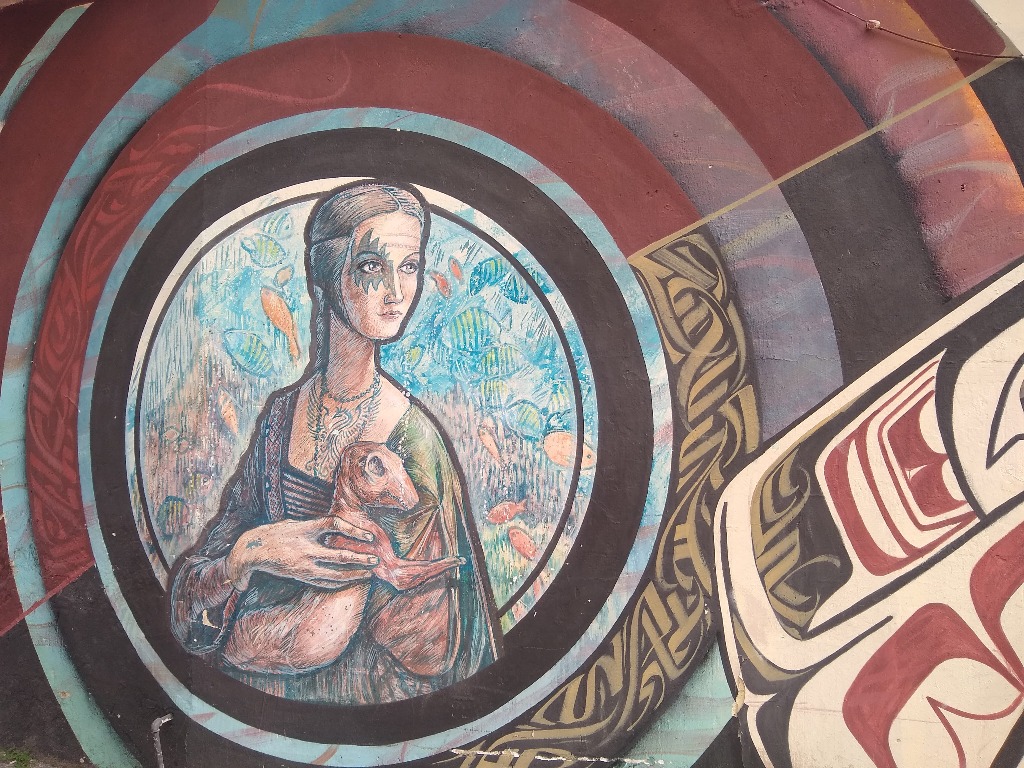
Ferret-centric mural
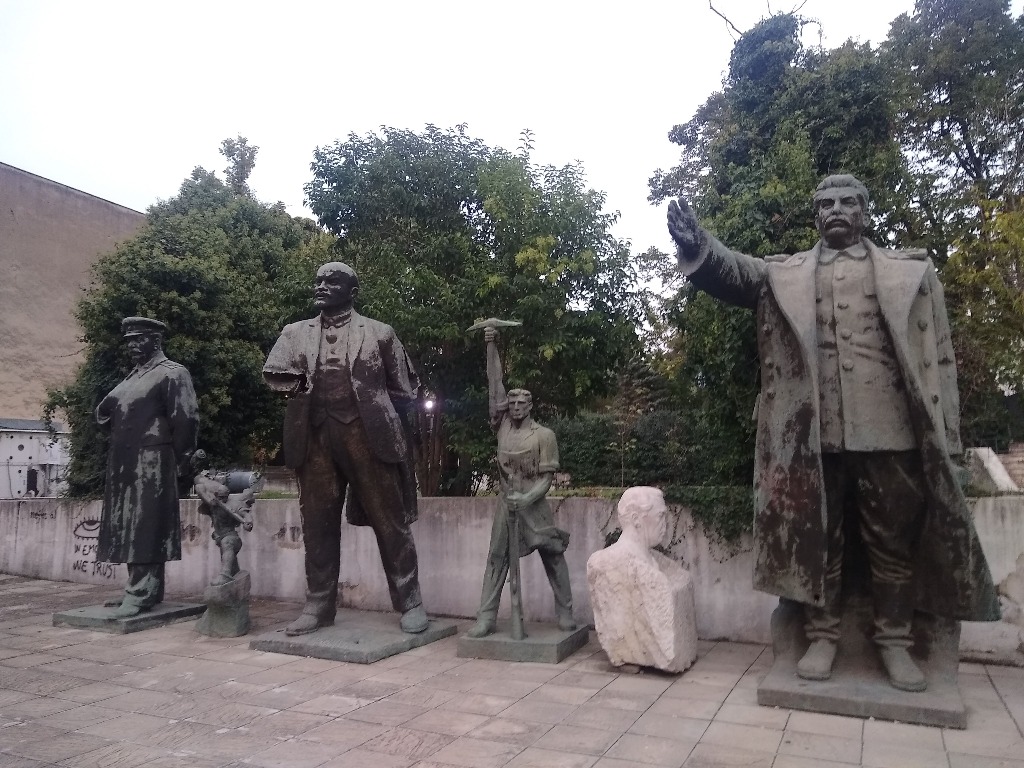
All the old Soviet statues got stashed in an alley behind the art museum
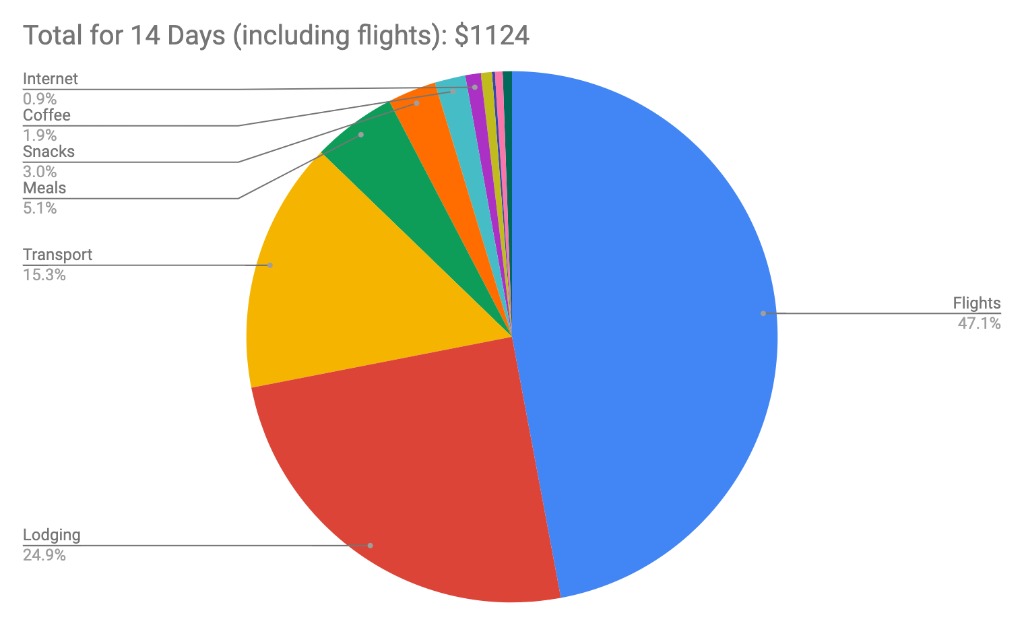
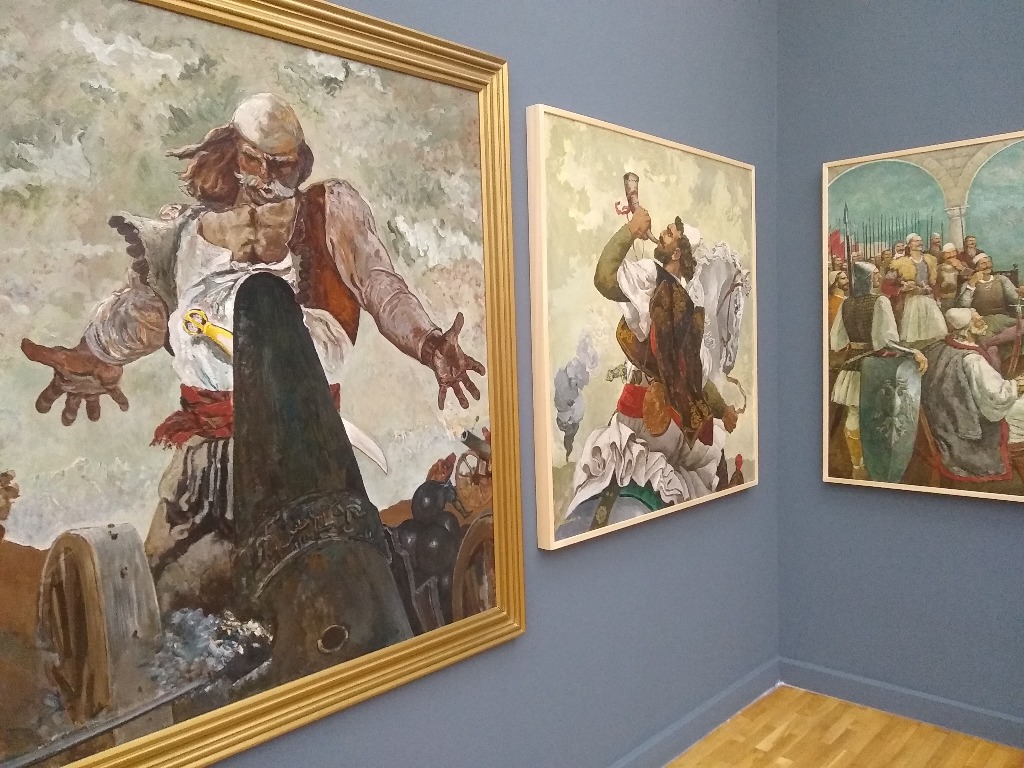
National Art Museum
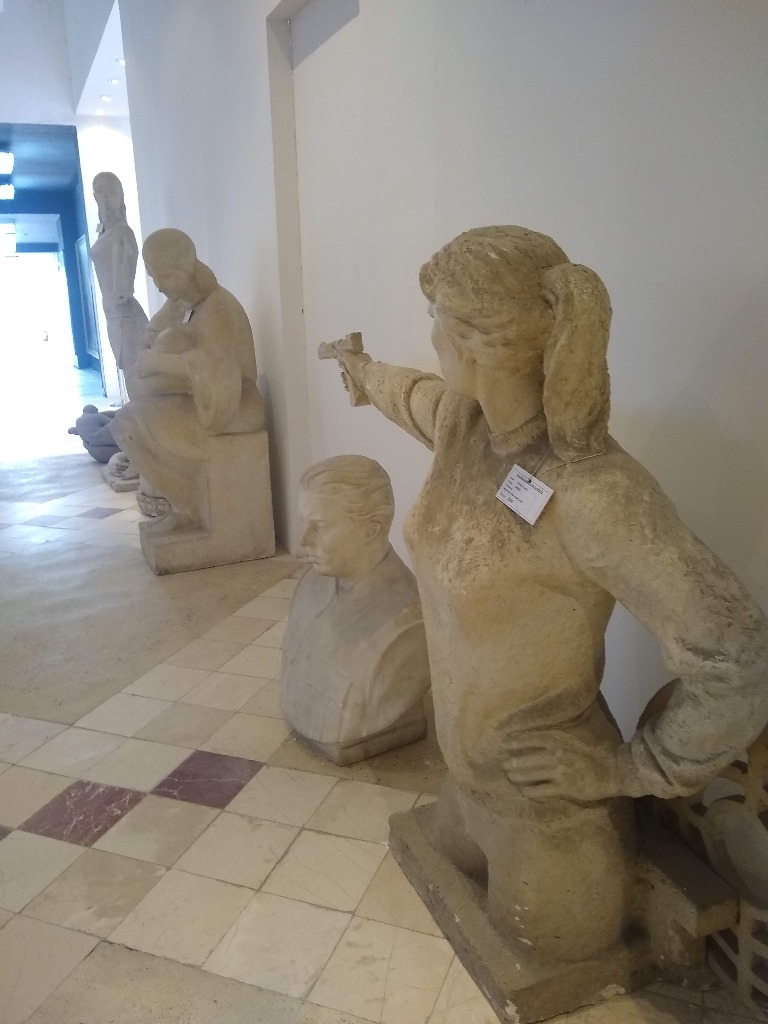
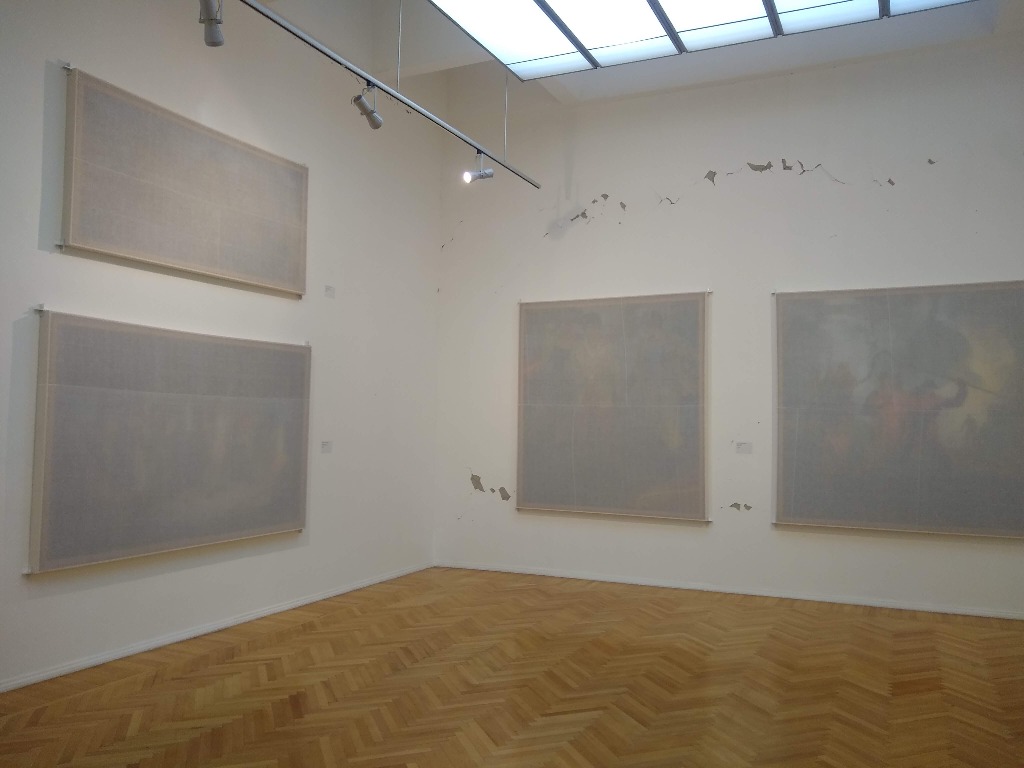
Innovative exhibition where they hide the art instead of showing it.
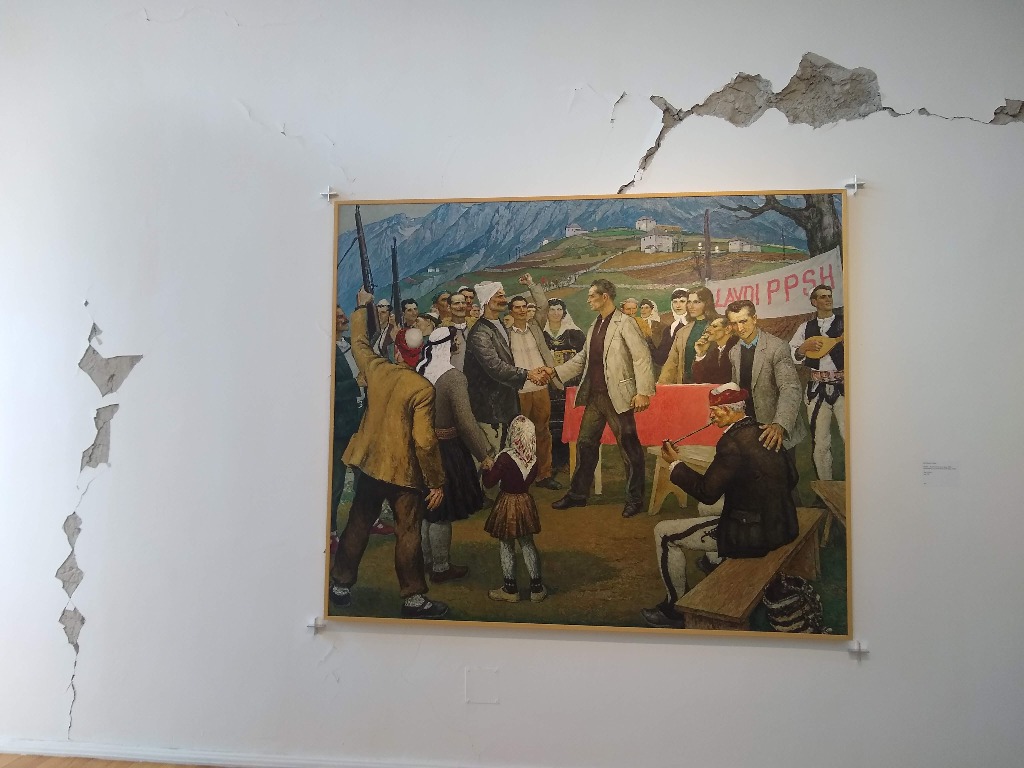
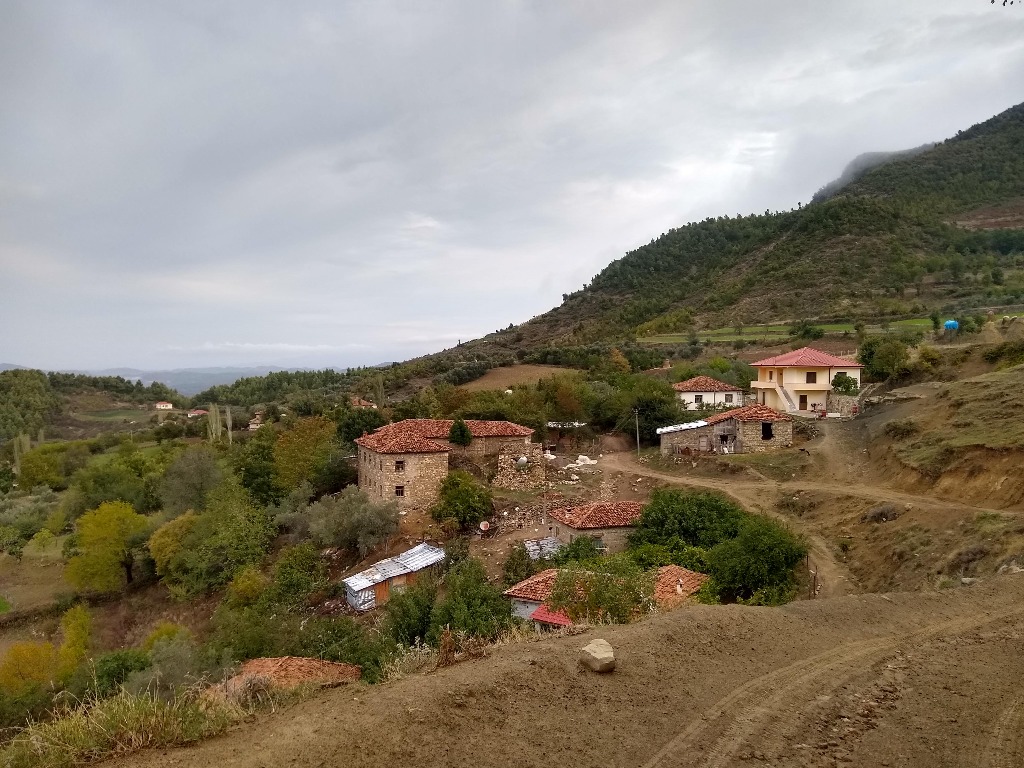
Along a very rough road
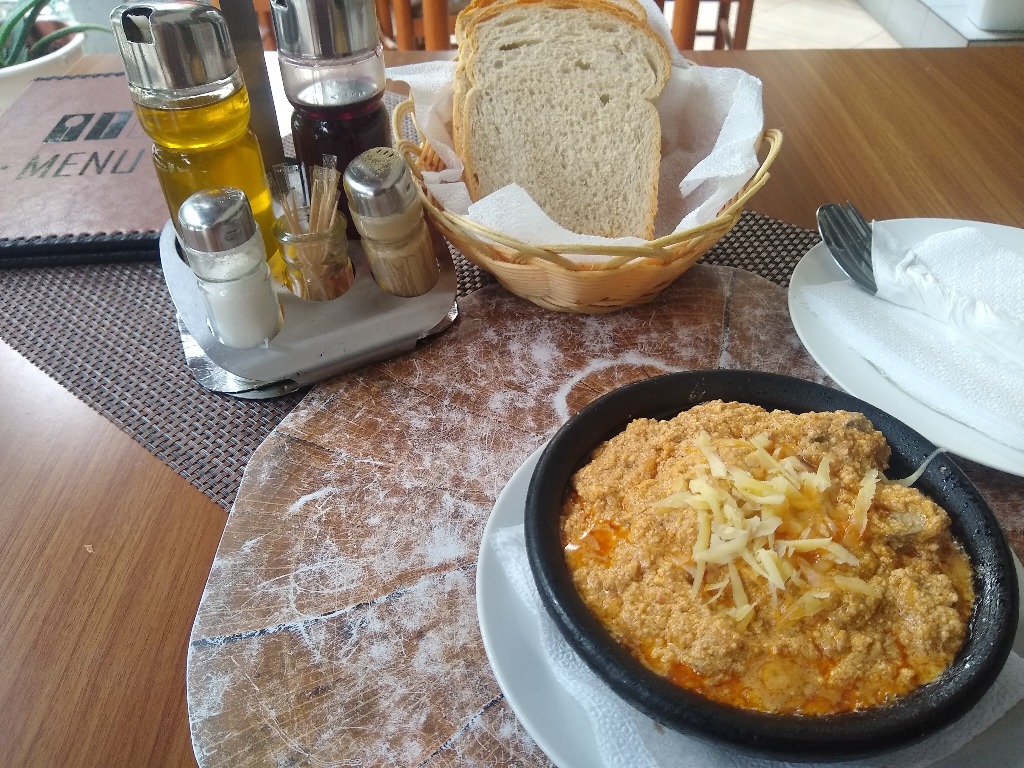
Accidentally ordered my second bowl of cheese, grease, and liver
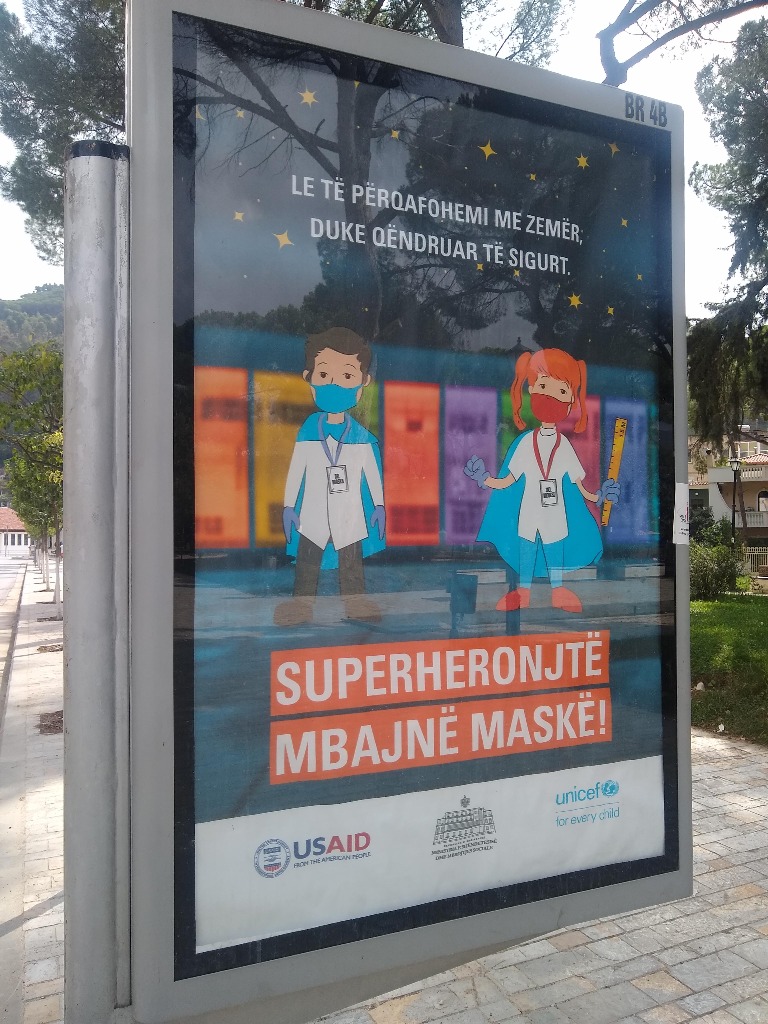
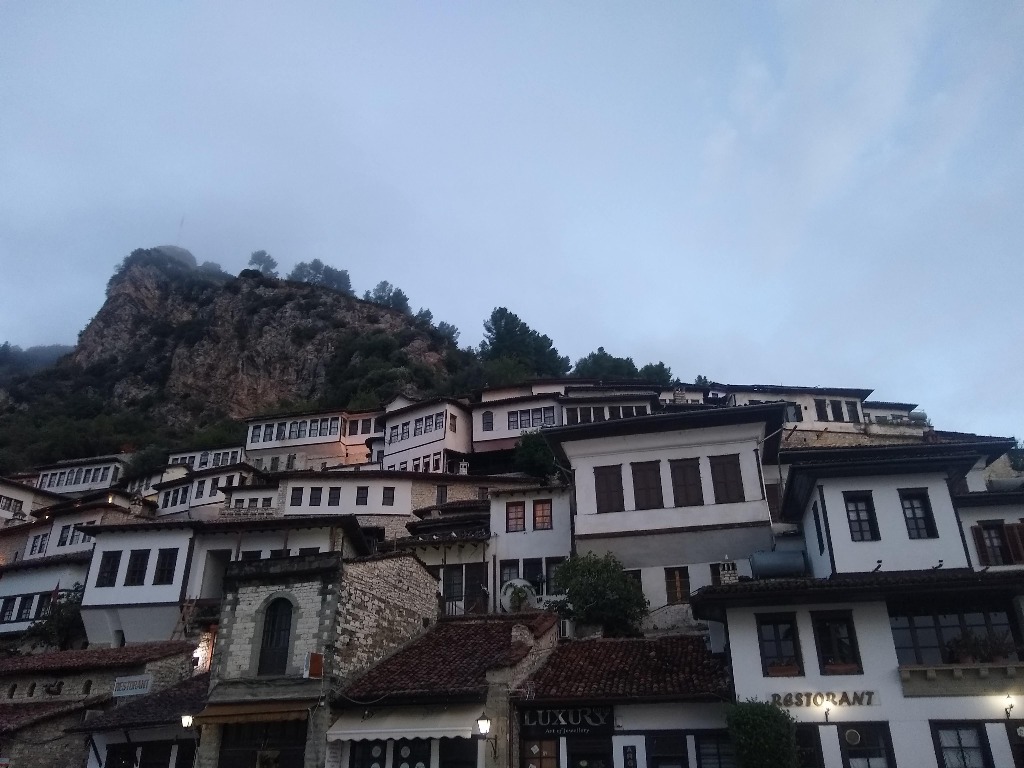
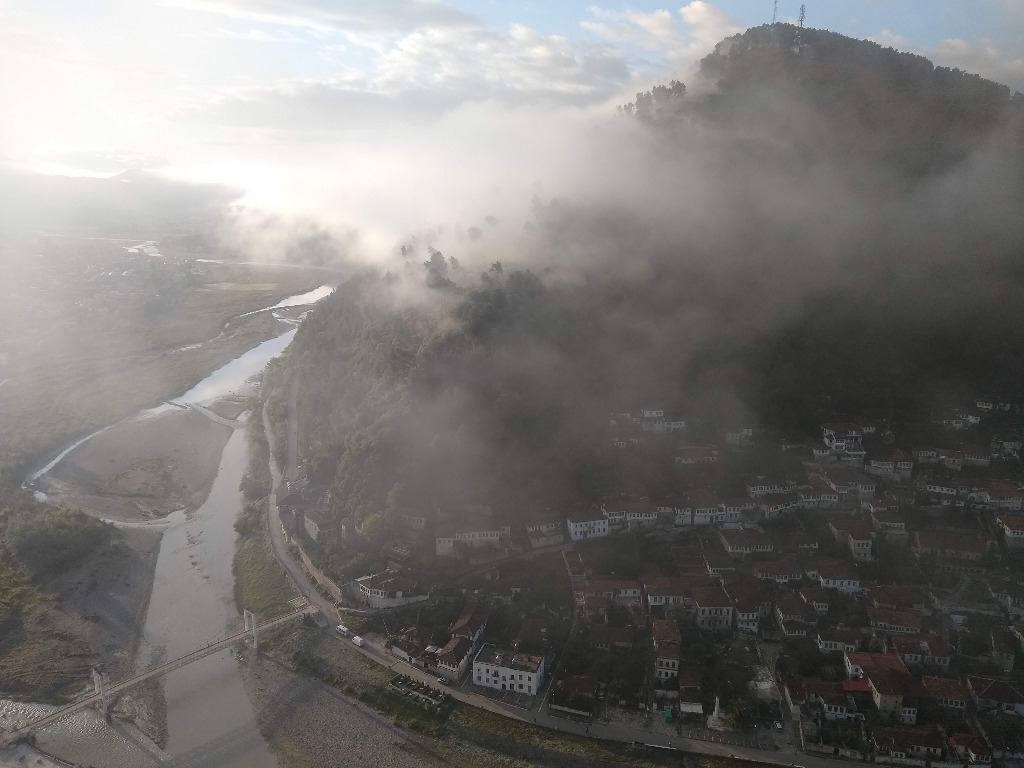
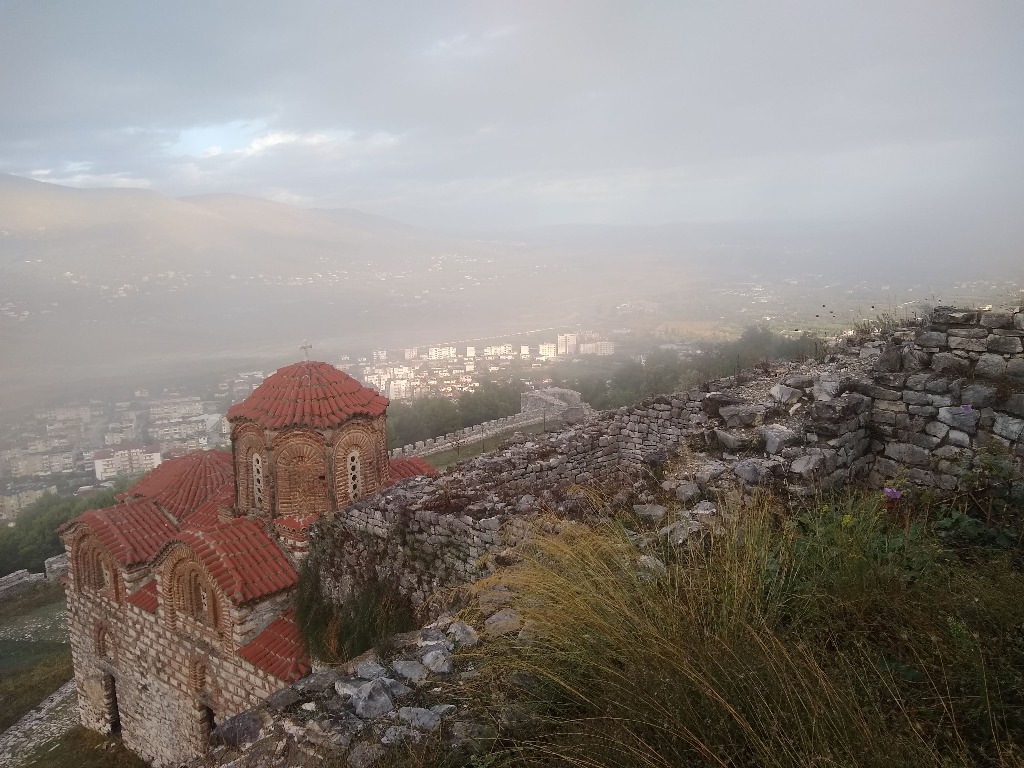
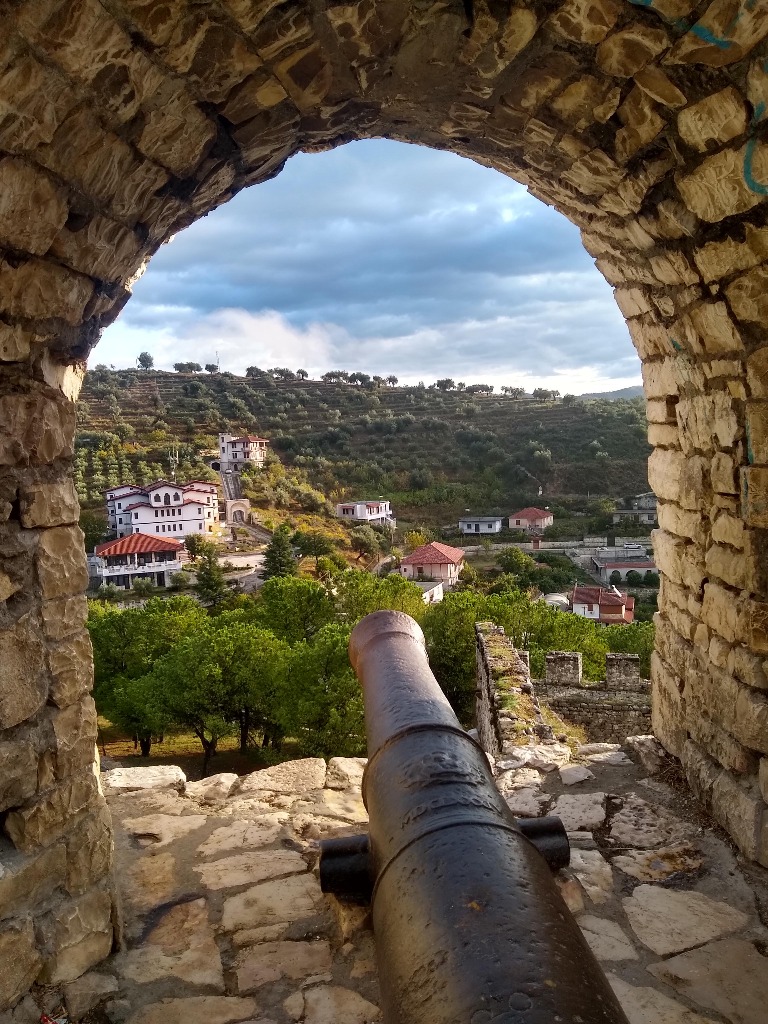
Keeping the neighbors in check
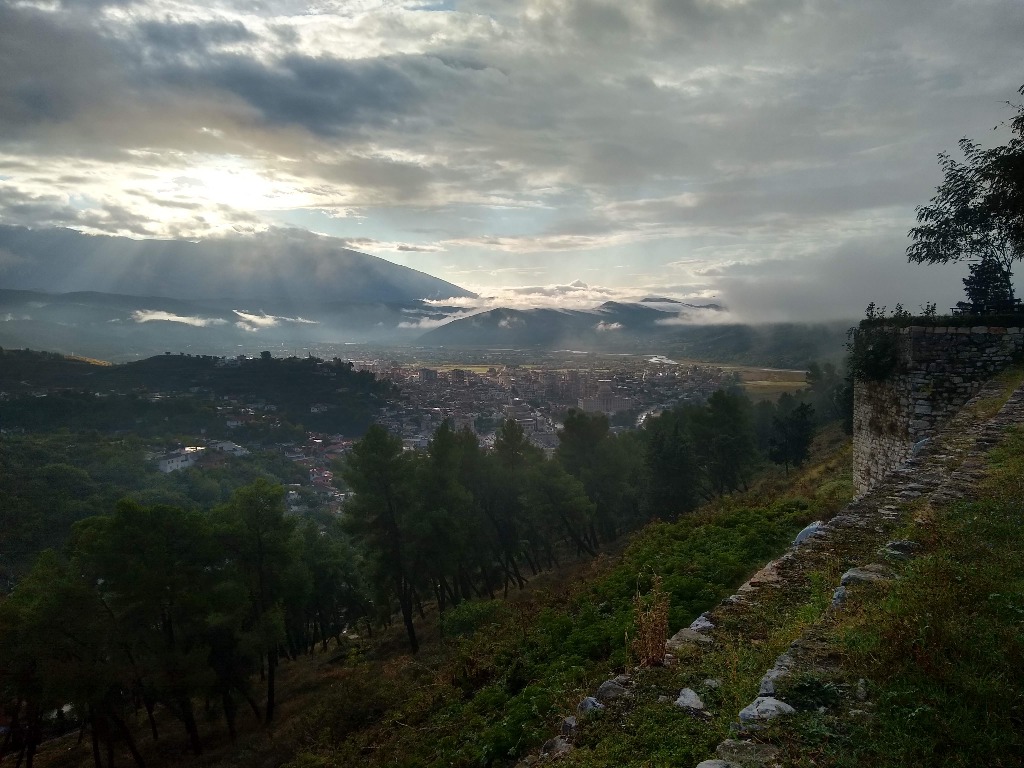
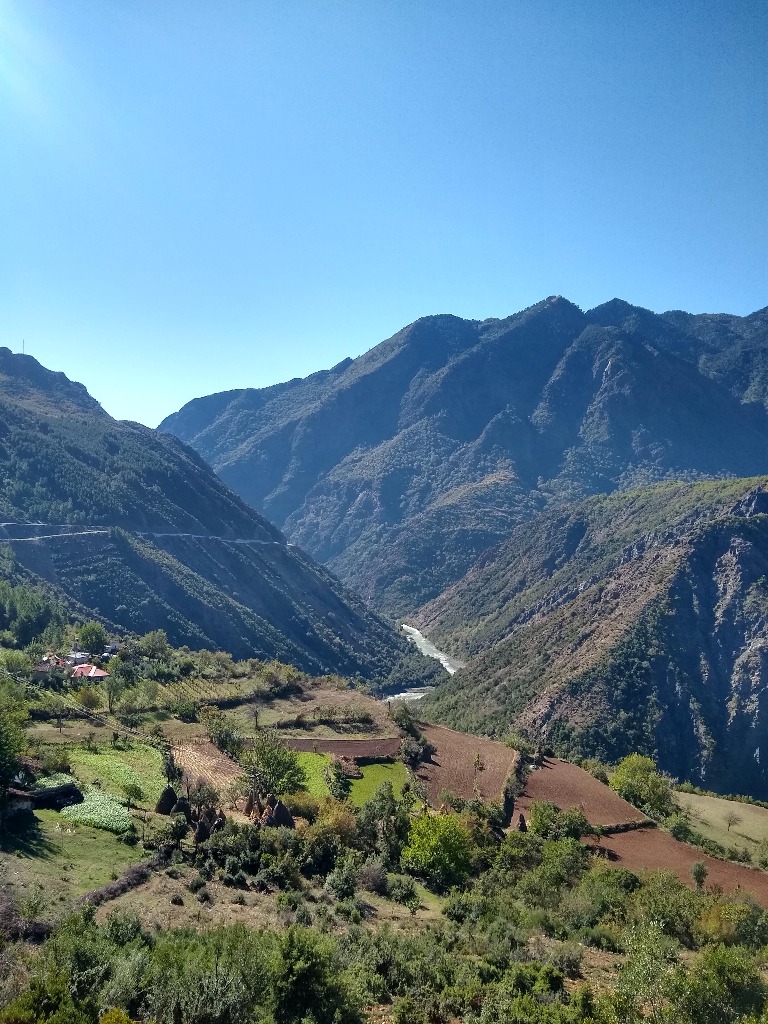
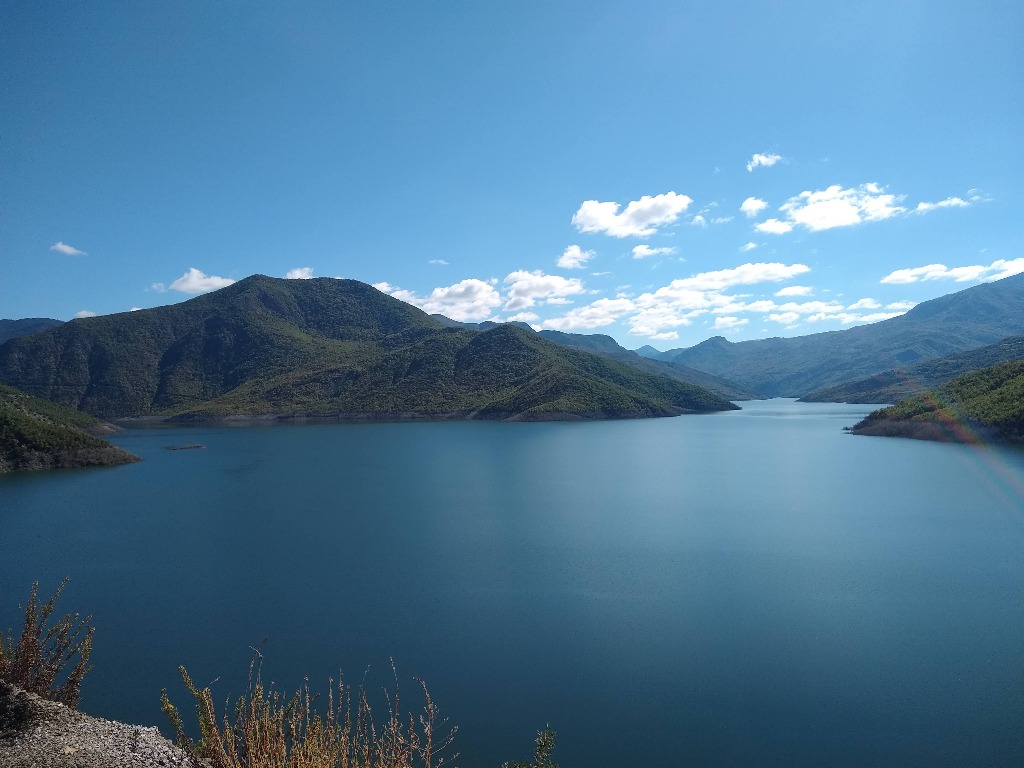
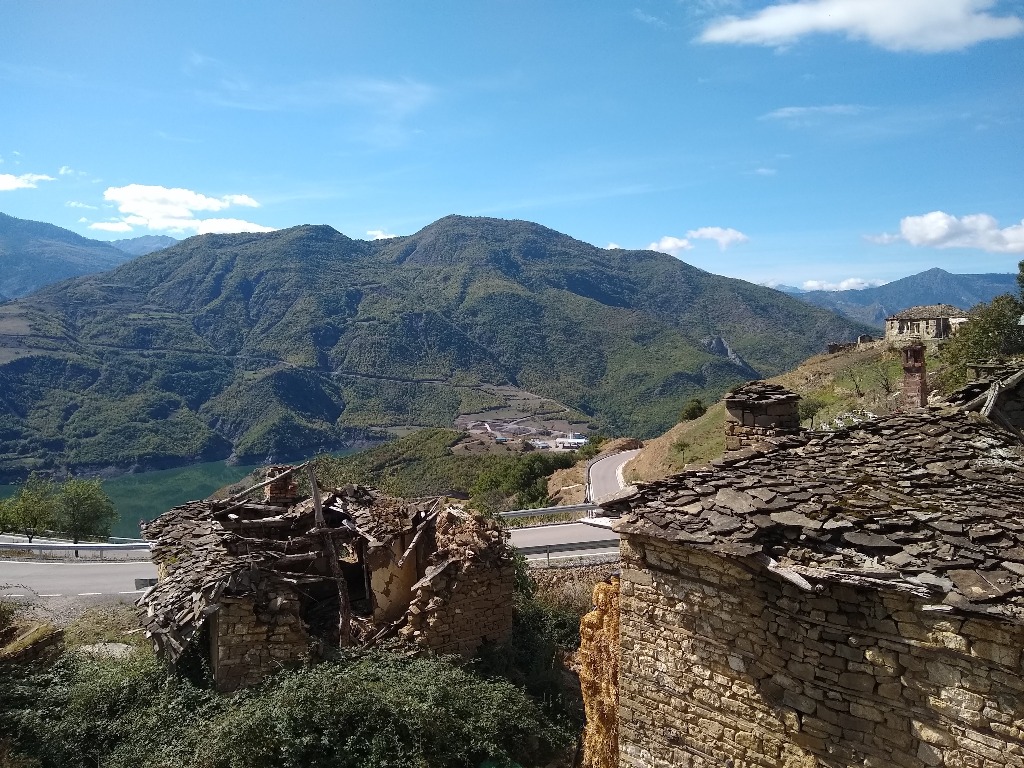
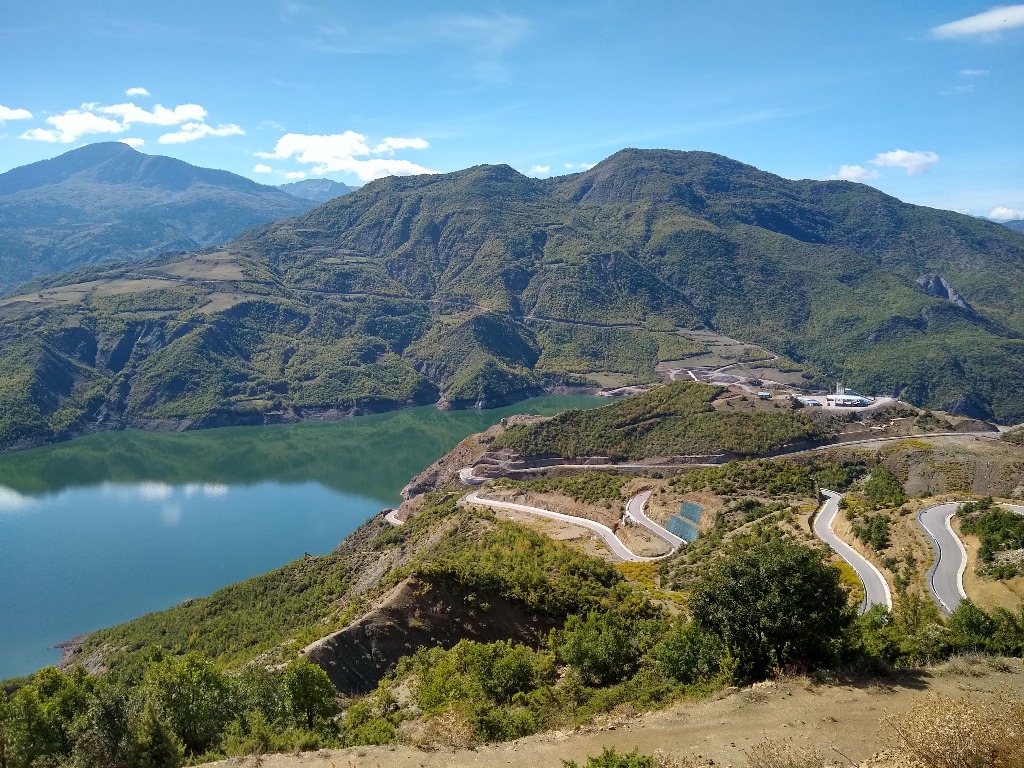
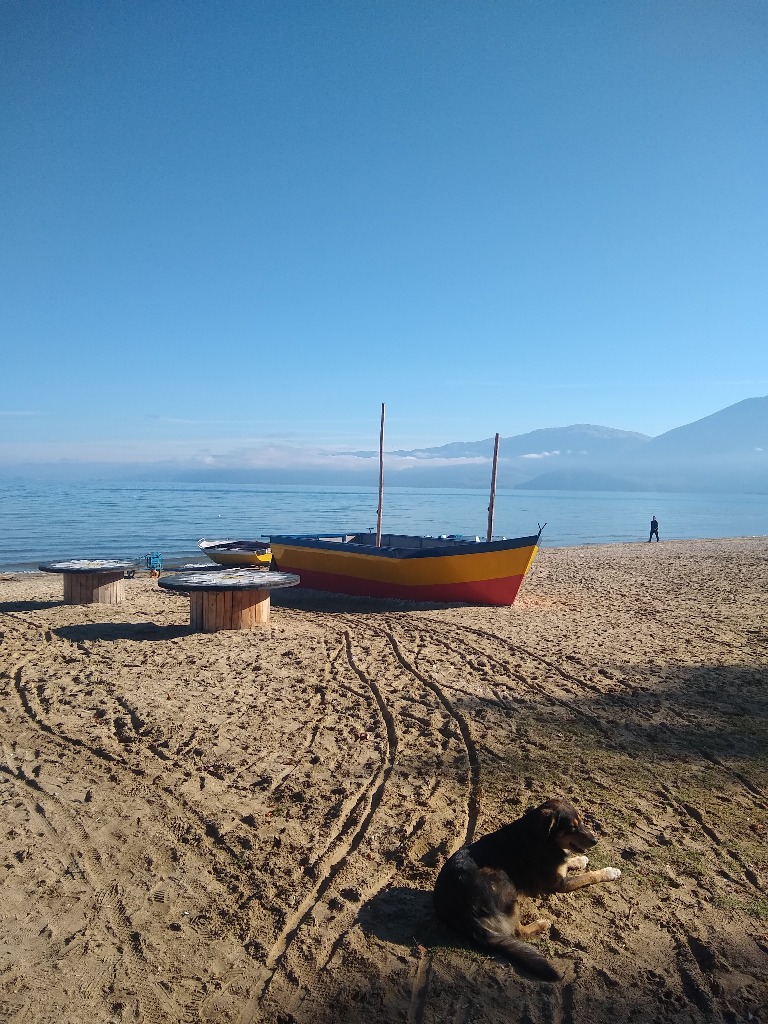
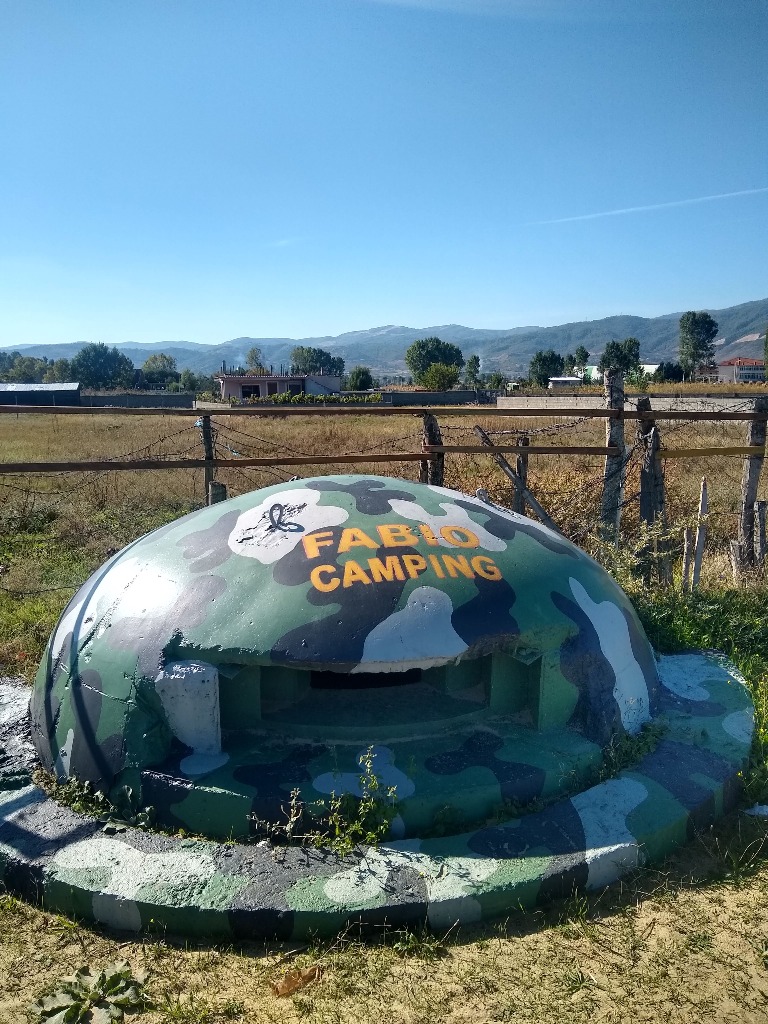
Repurposing Hoxha's bunkers
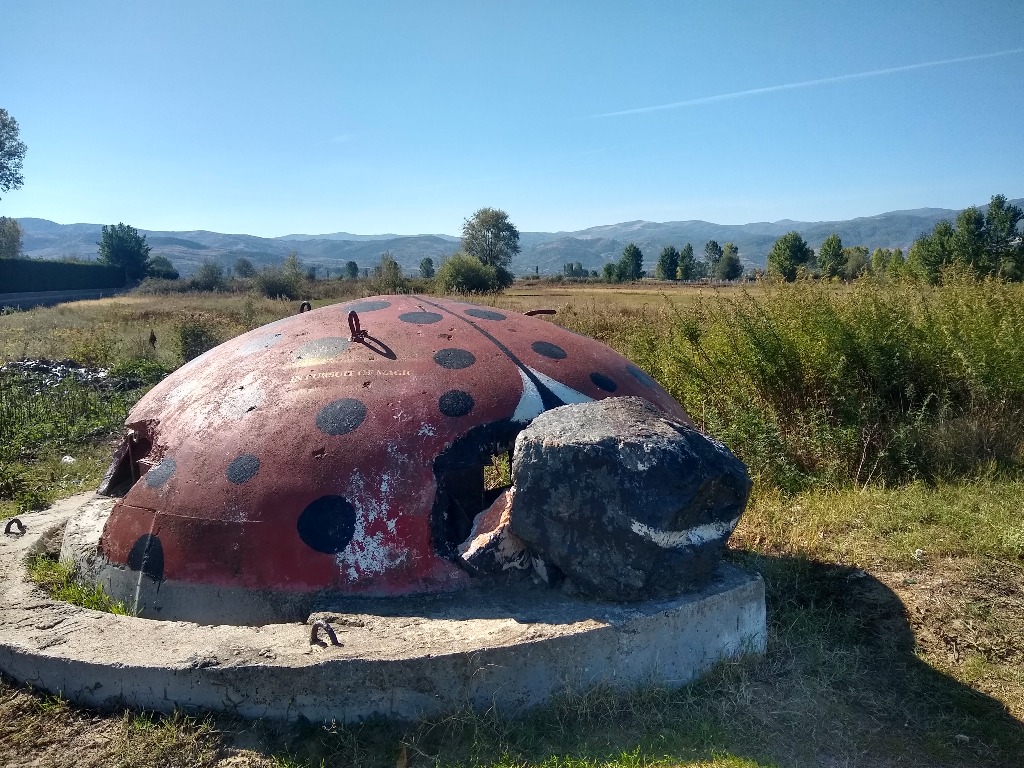
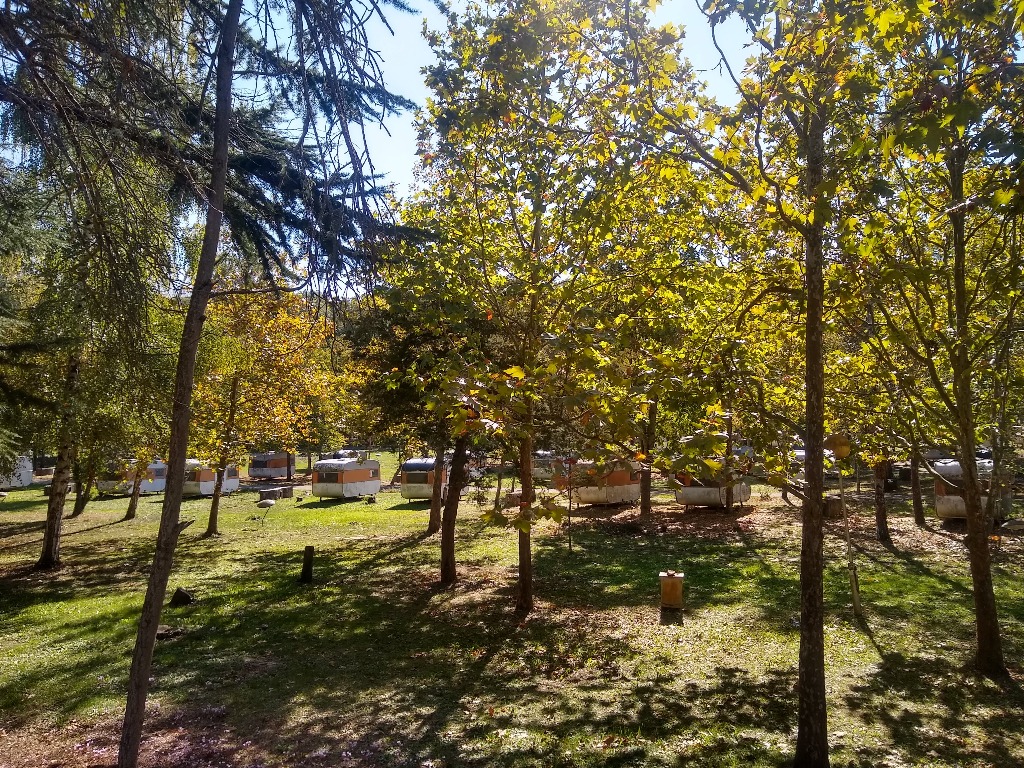
Caravan park
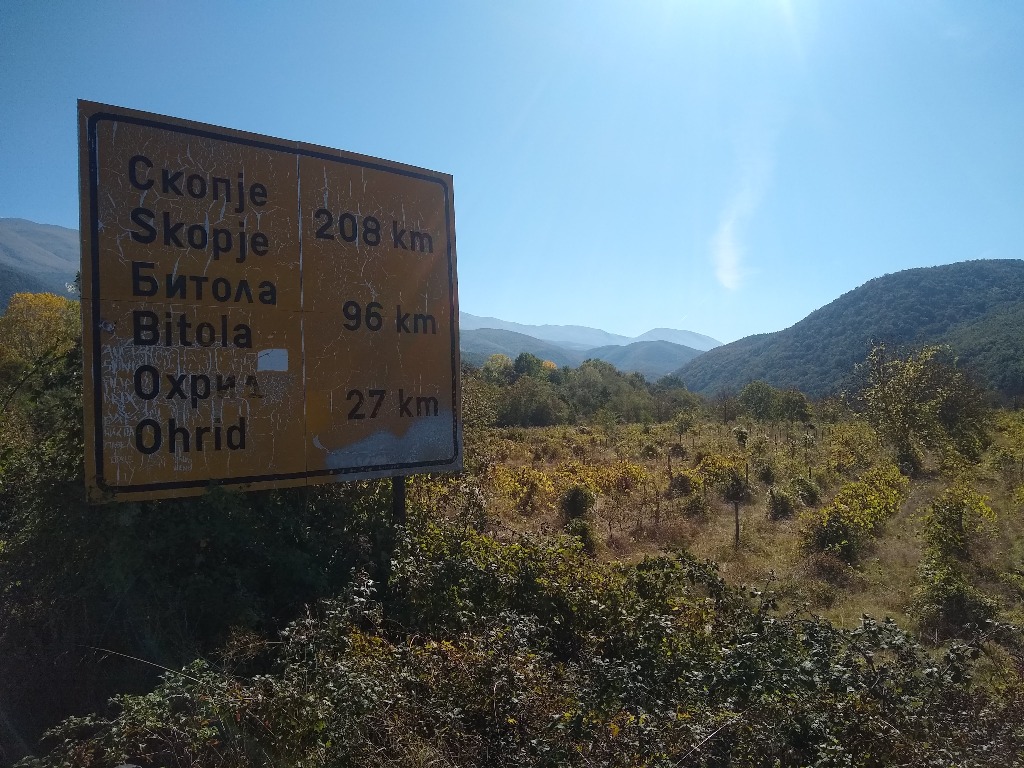
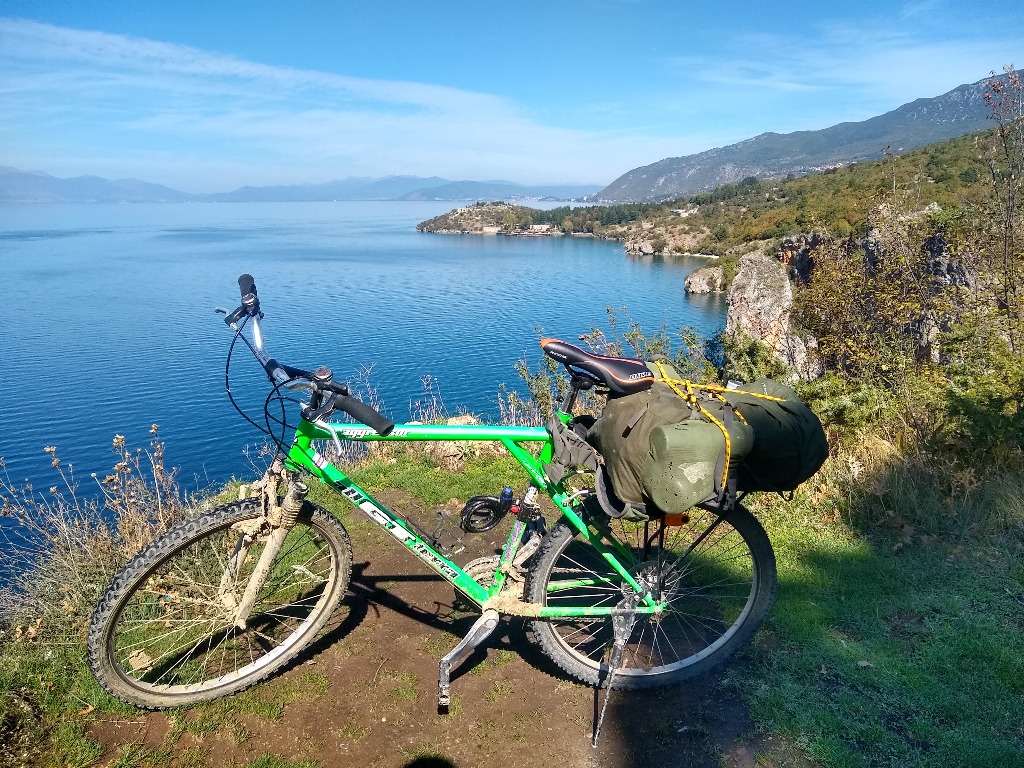
Lake Ohrid
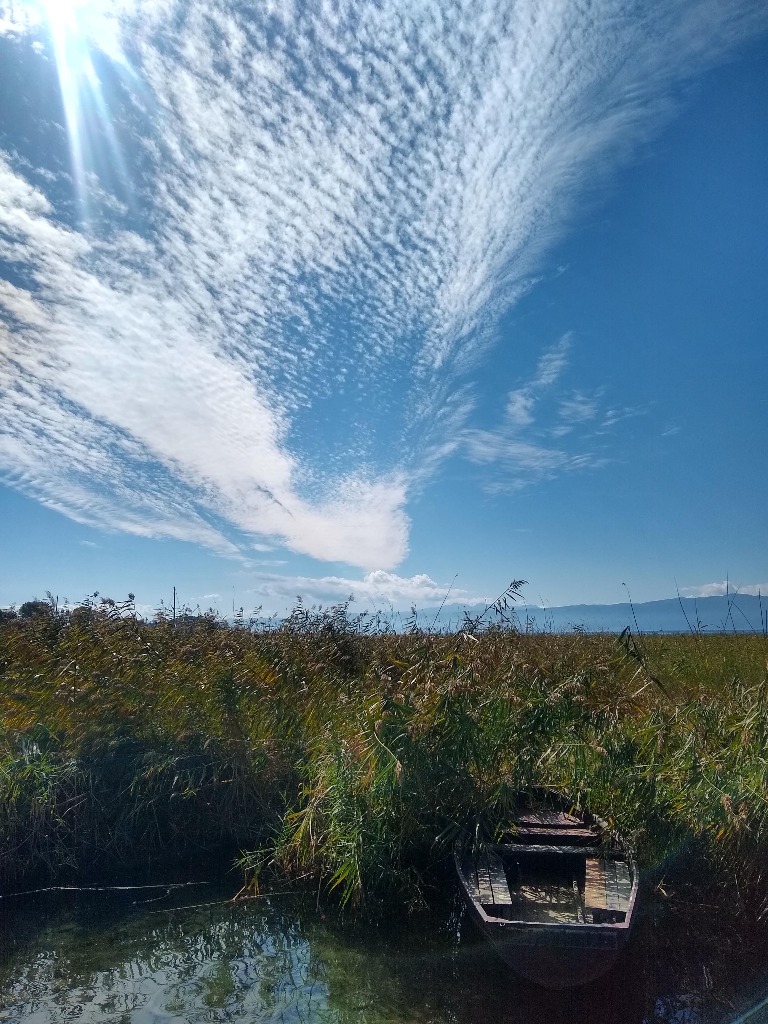
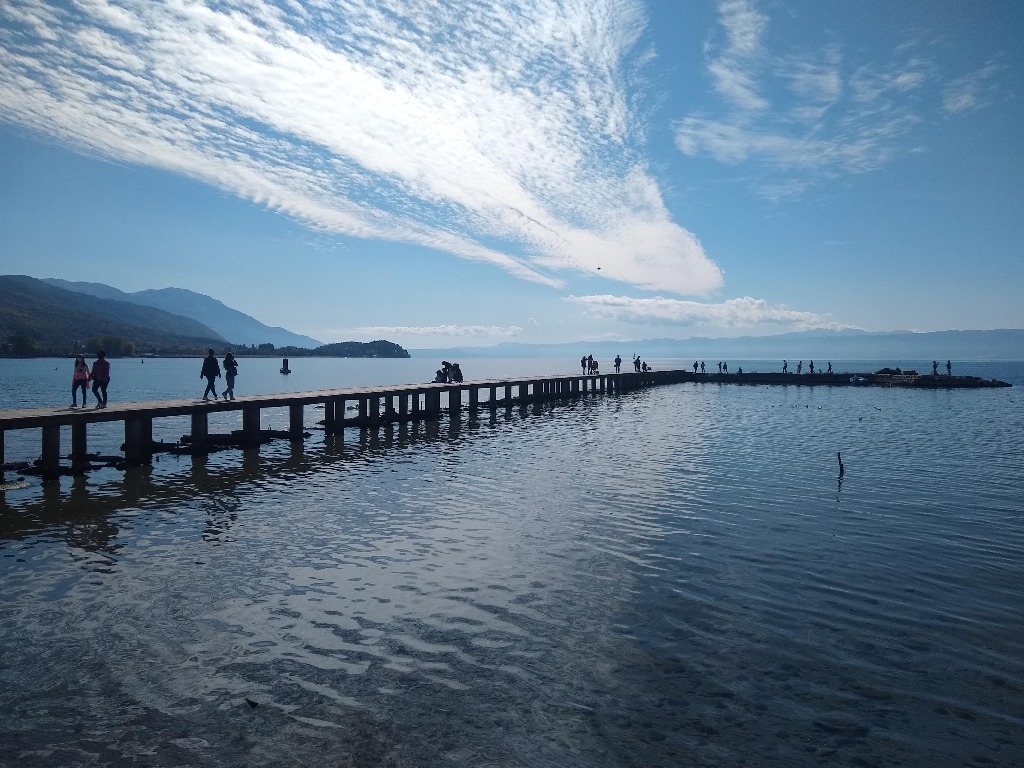
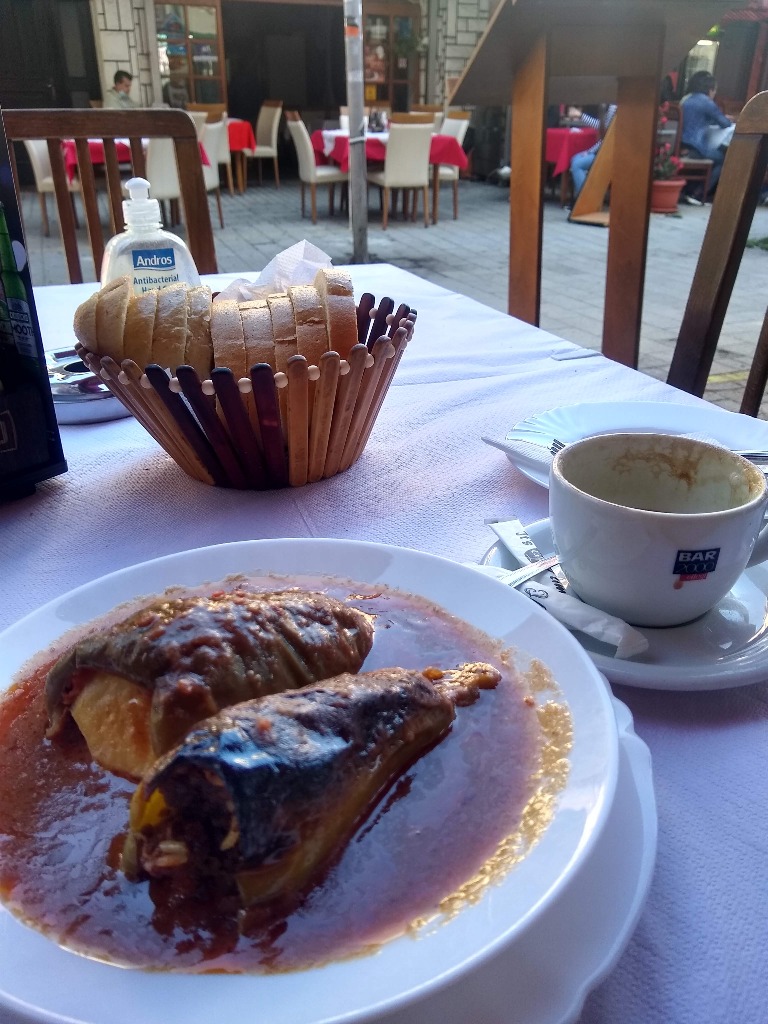
Stuffed peppers. For once, a small amount of vegetable, amidst the usual sea of meat and fat
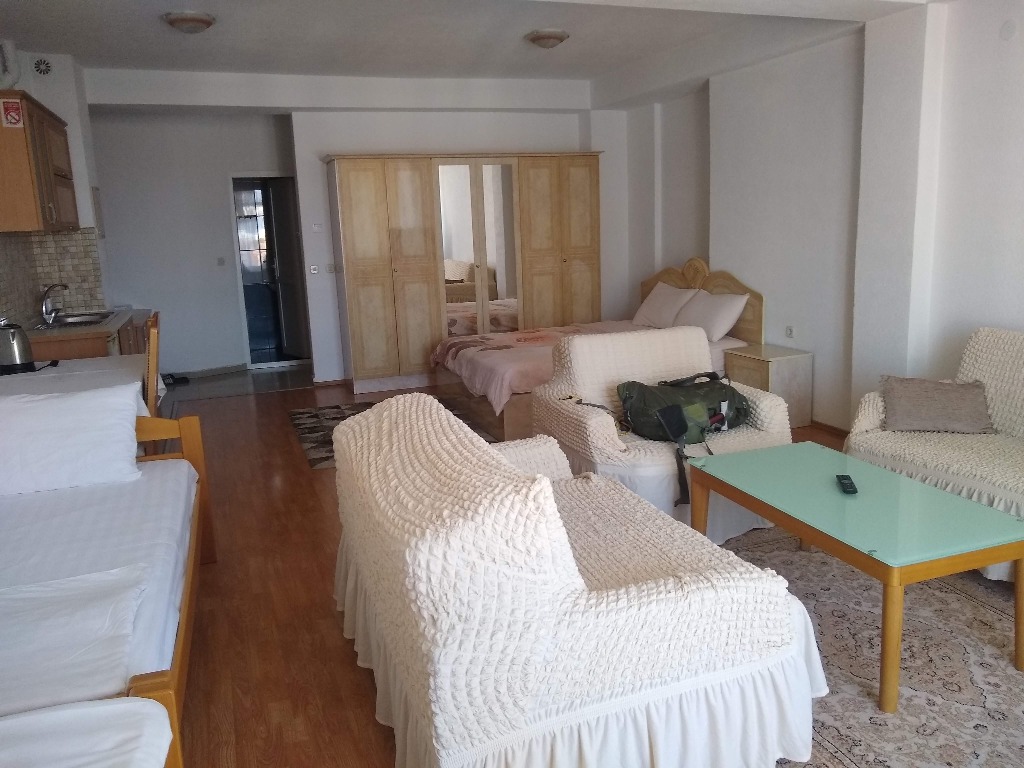
15 euro apartment
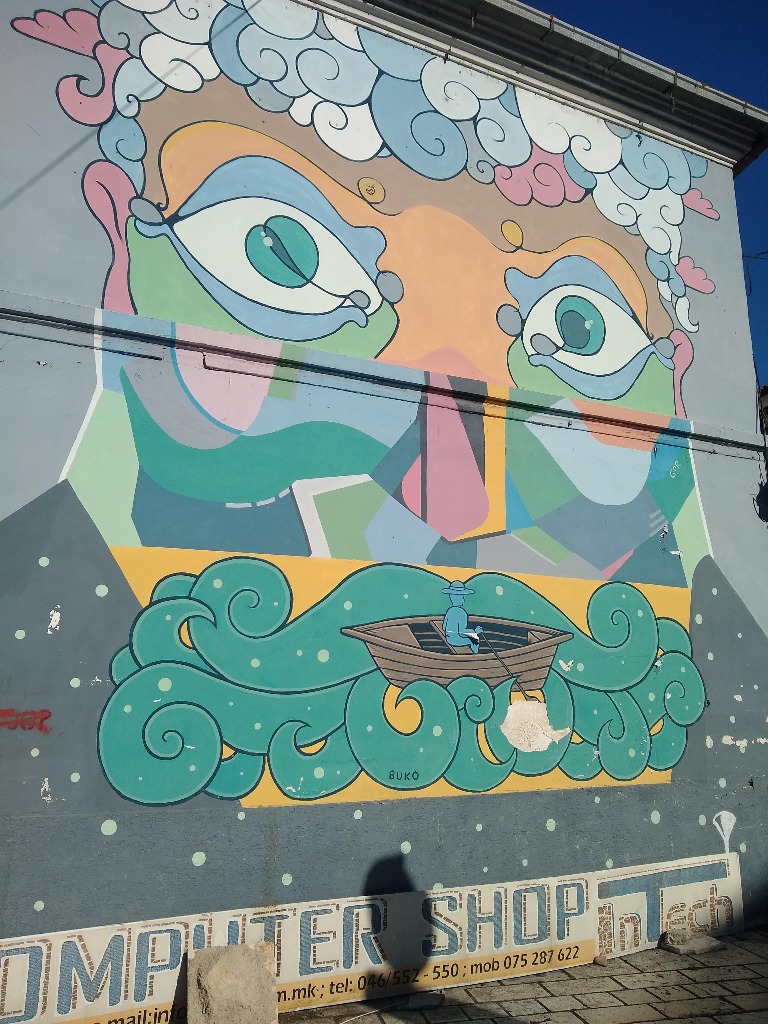
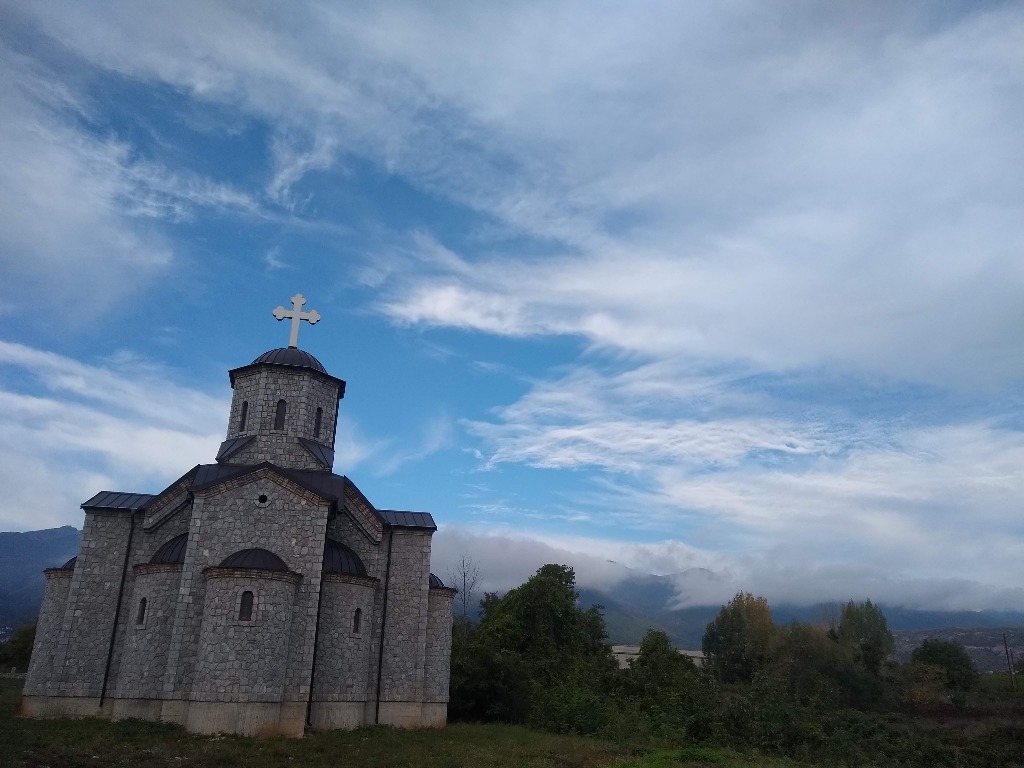
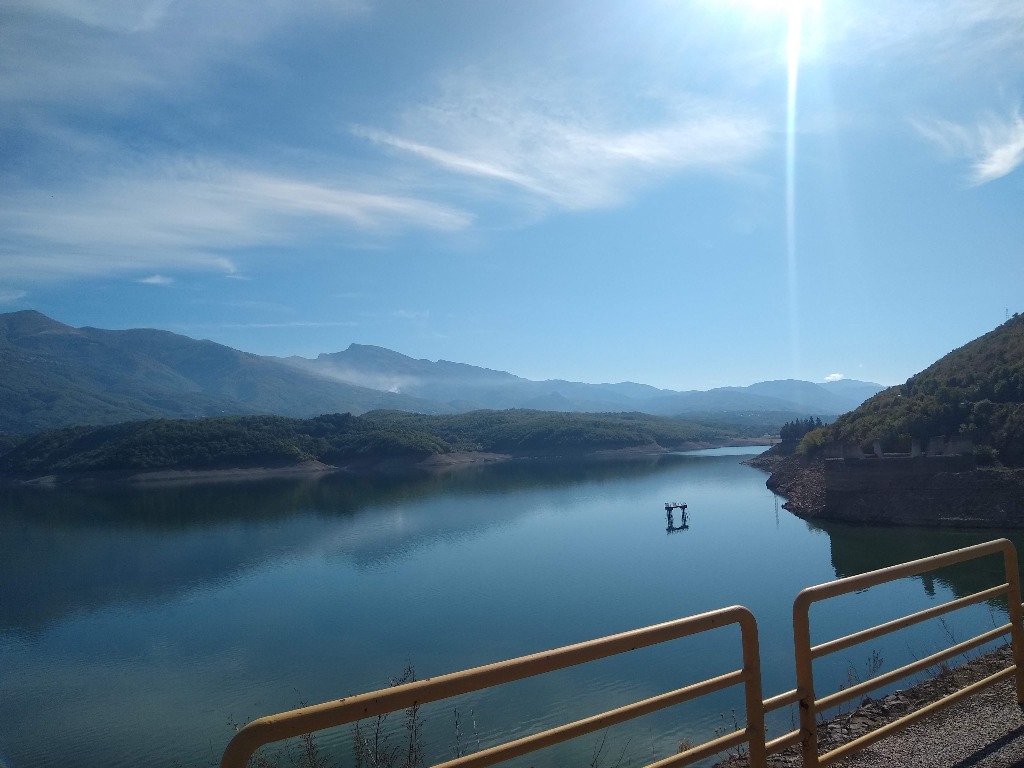
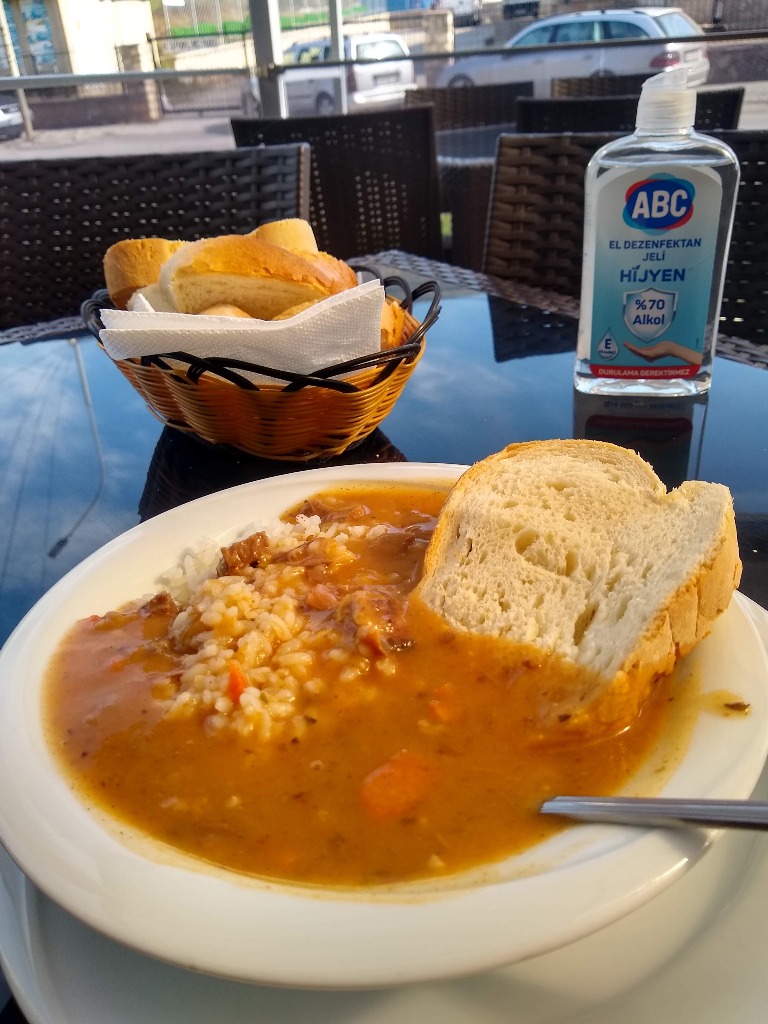
Not sure what this is - just ordered from a case
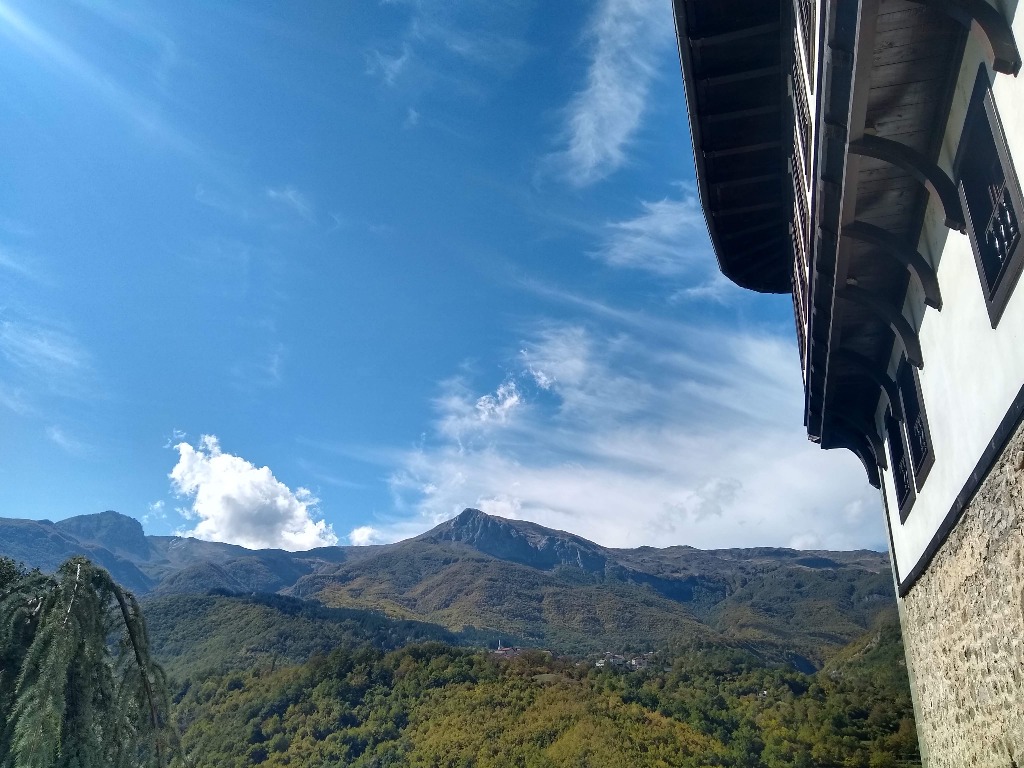
Famous monastery
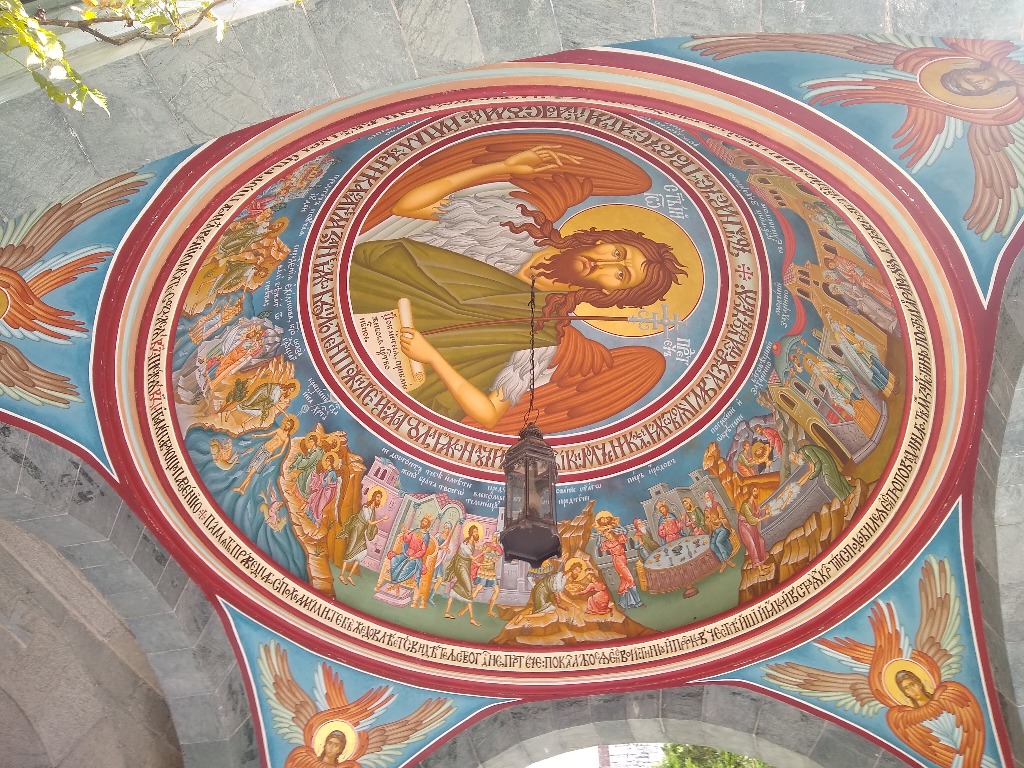
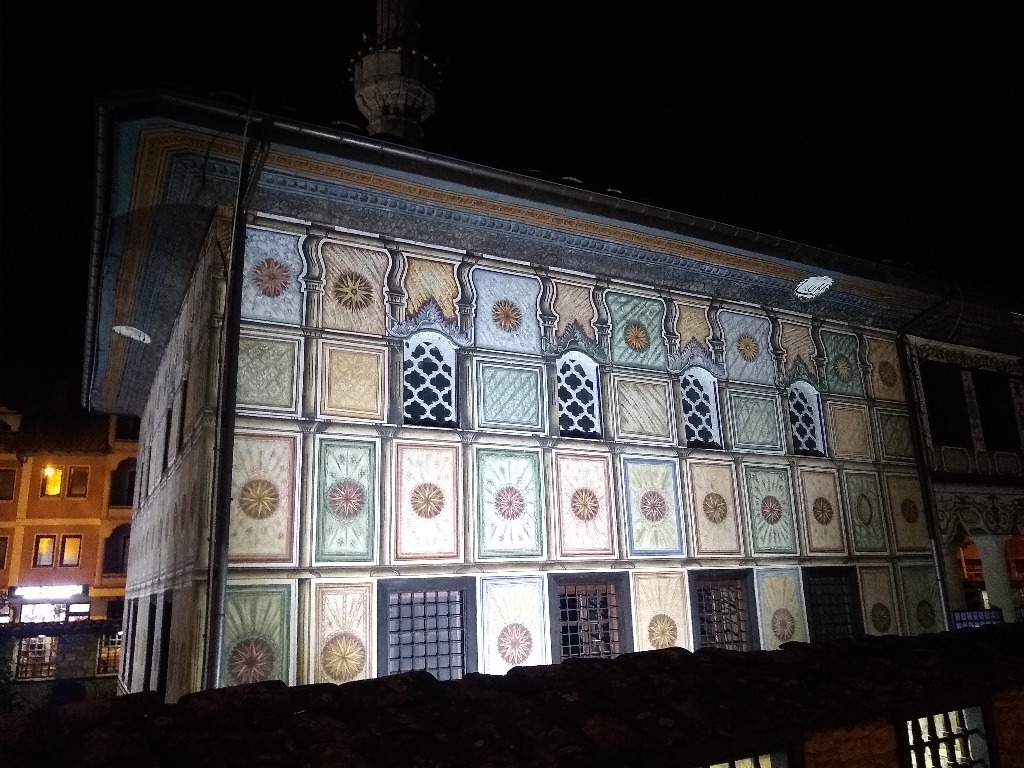
Painted mosque
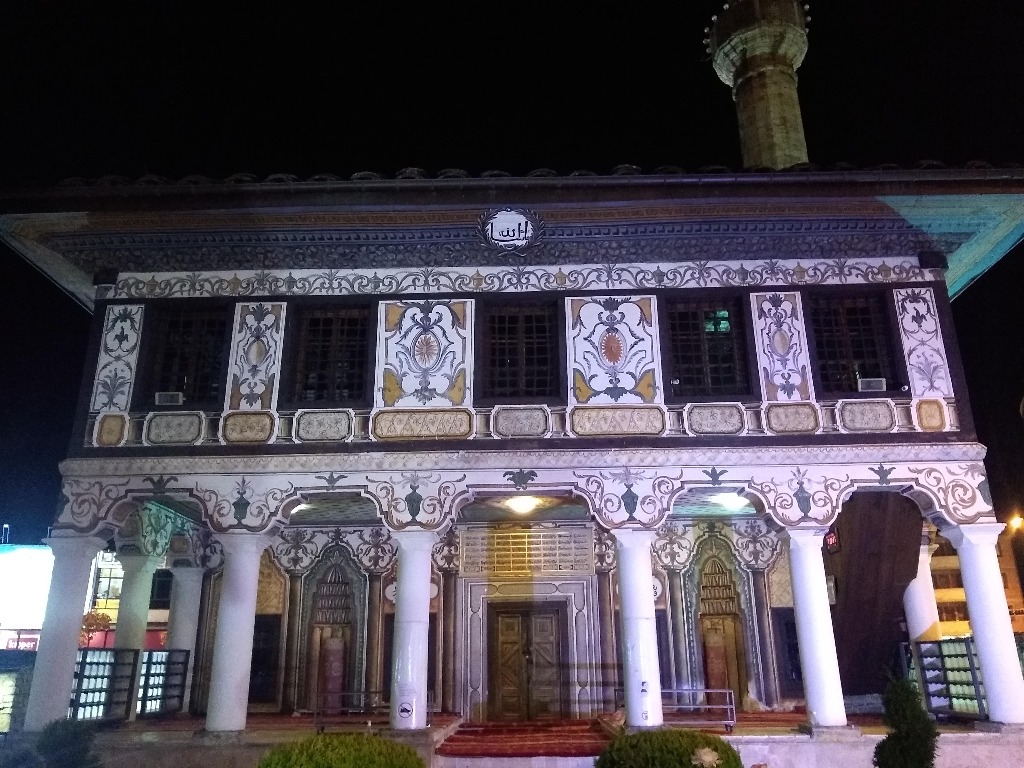
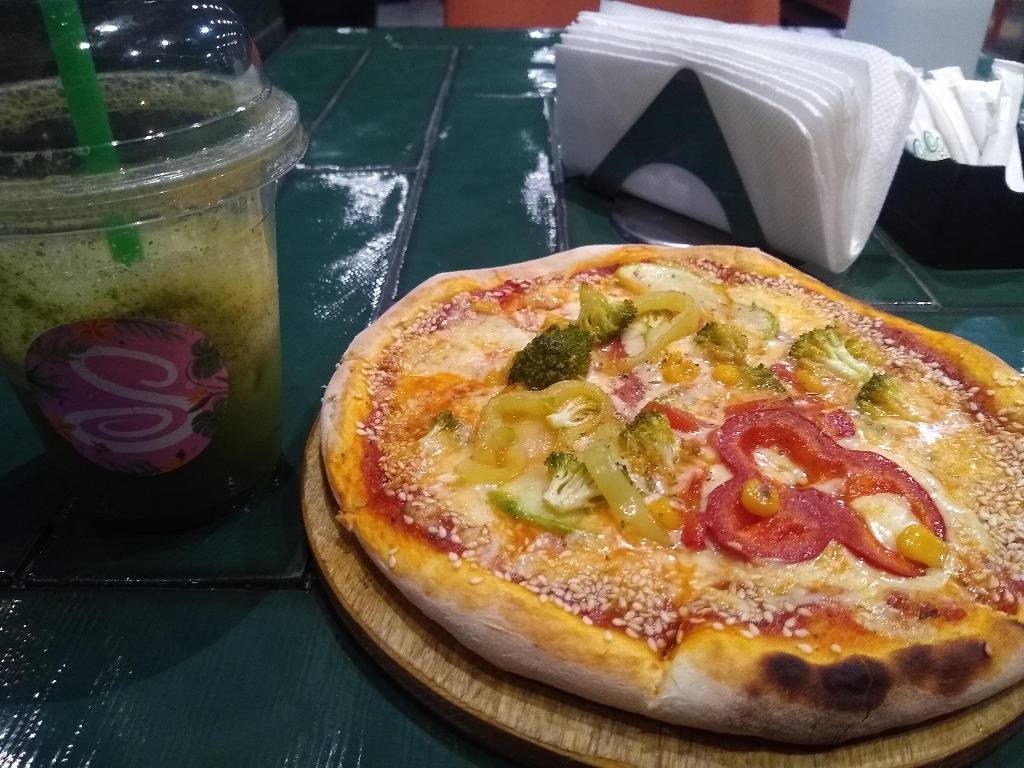
A rare veggie dinner
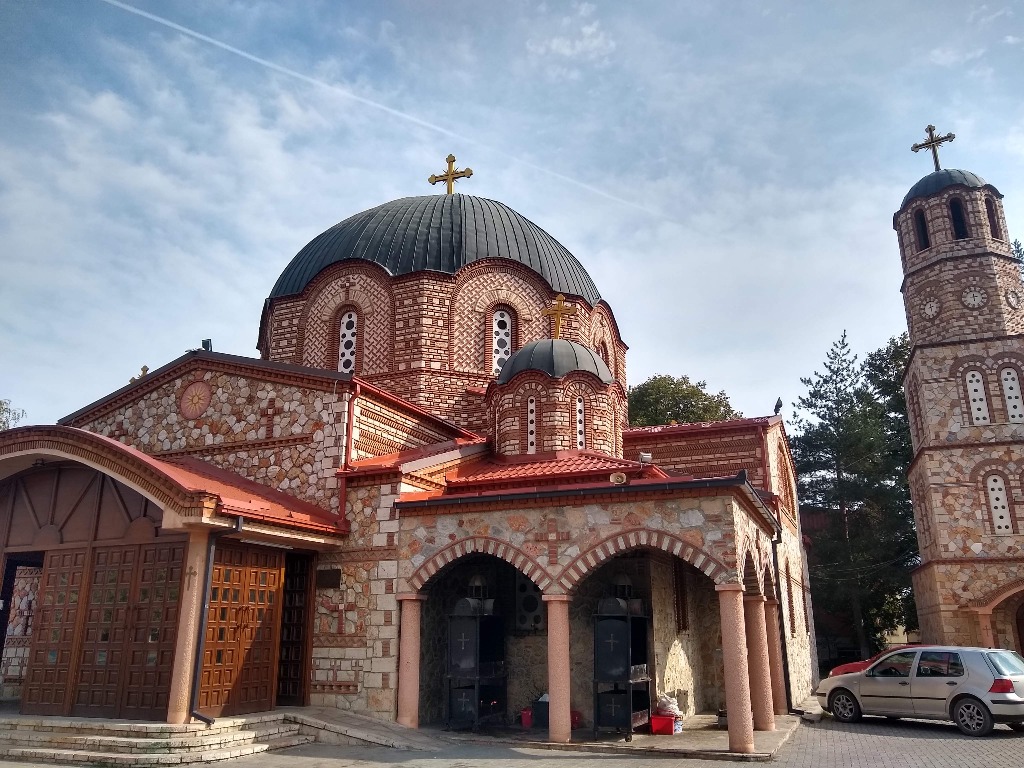
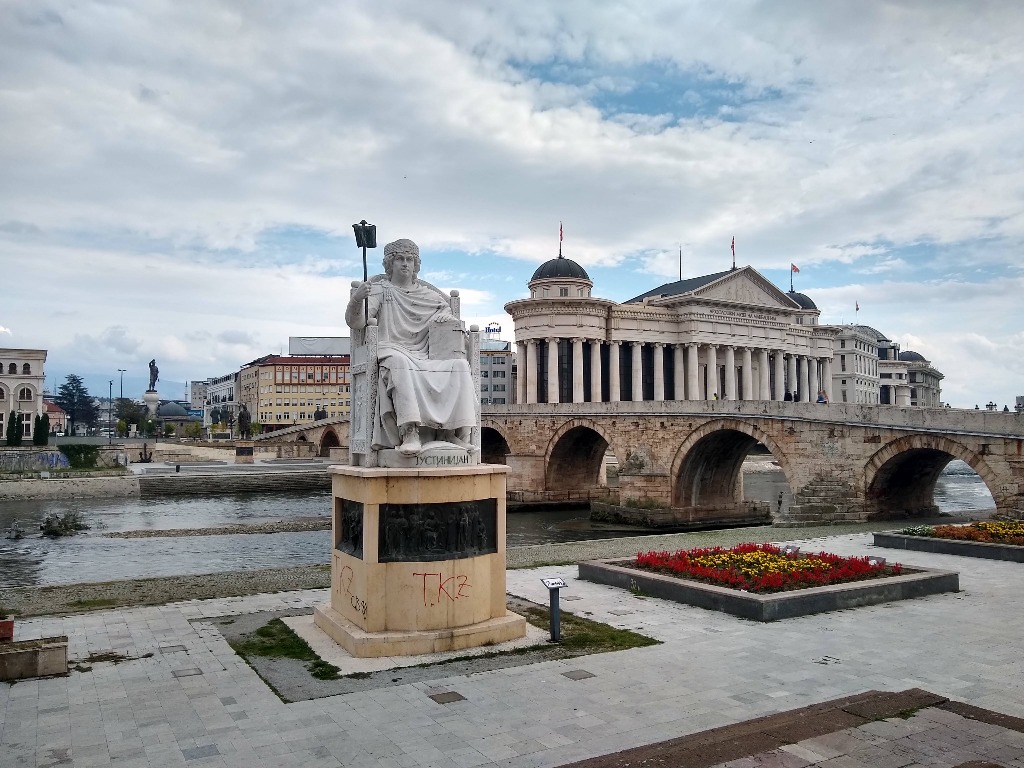
Central Skopje
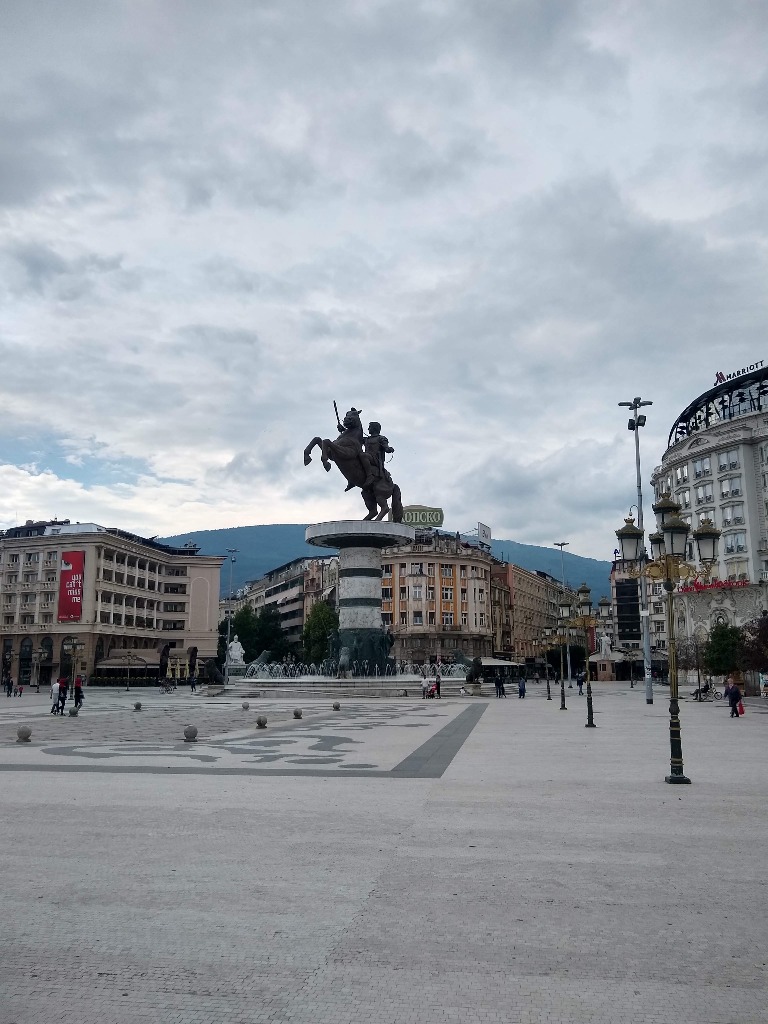
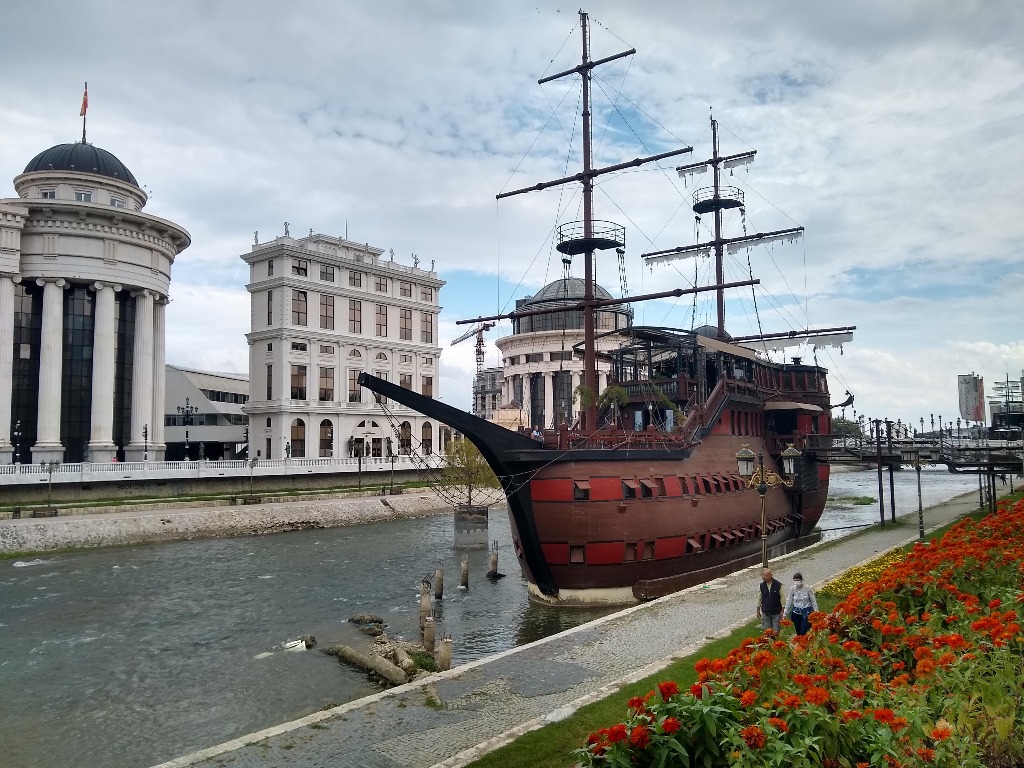
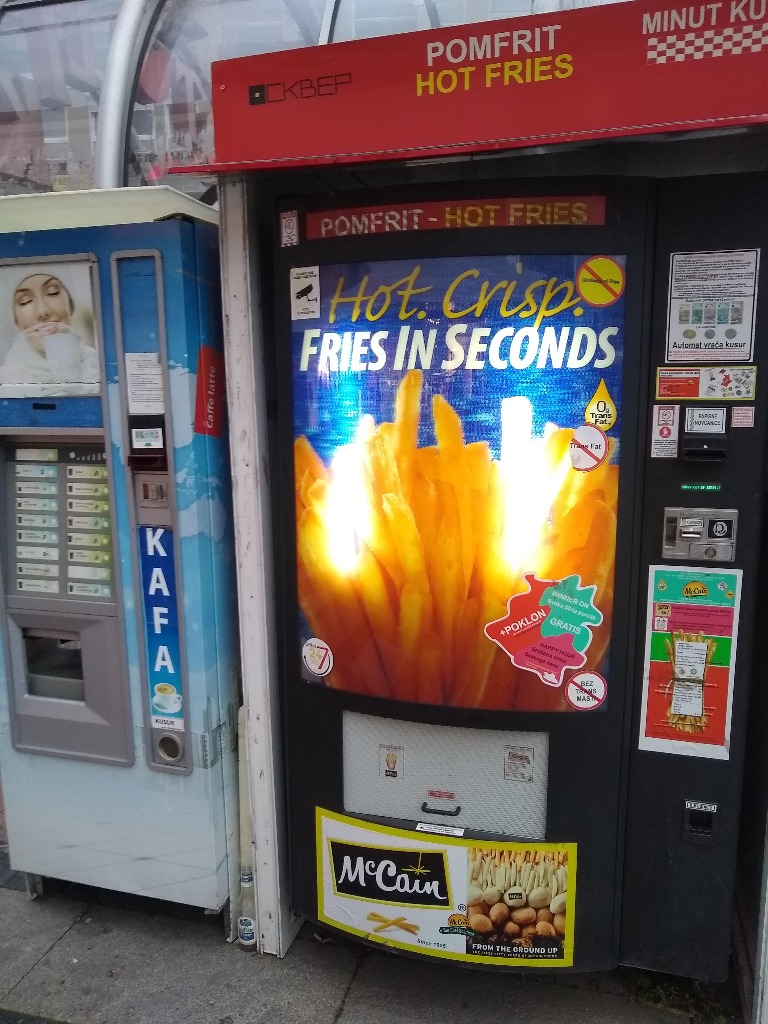
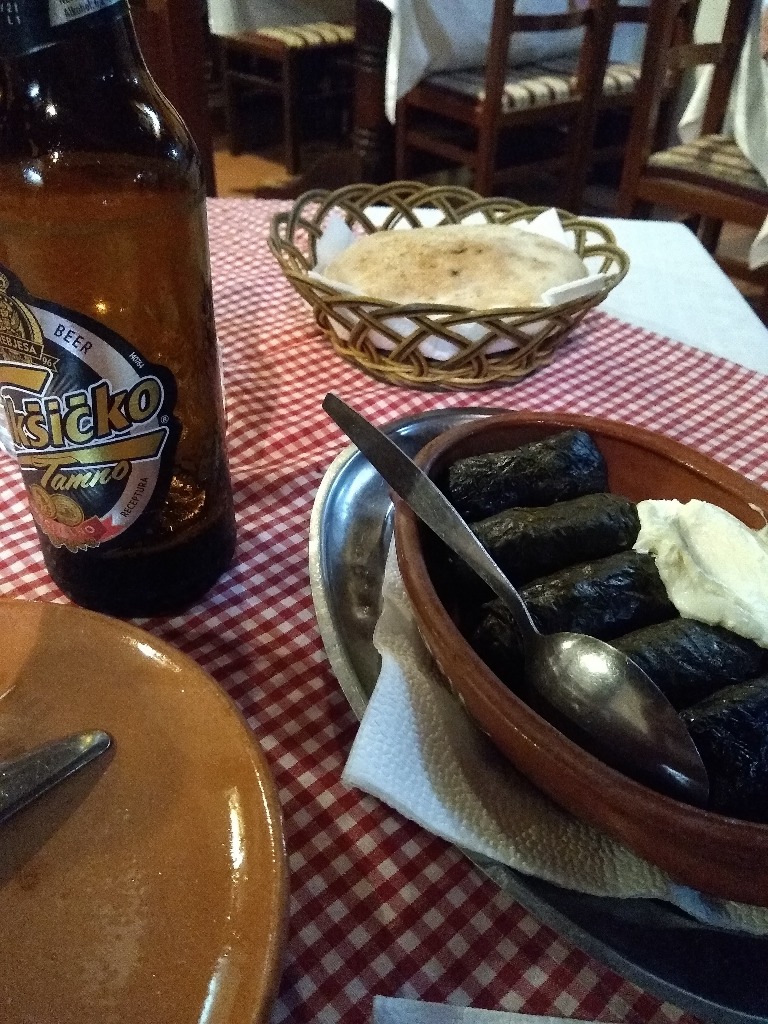
Stuffed grape leaves
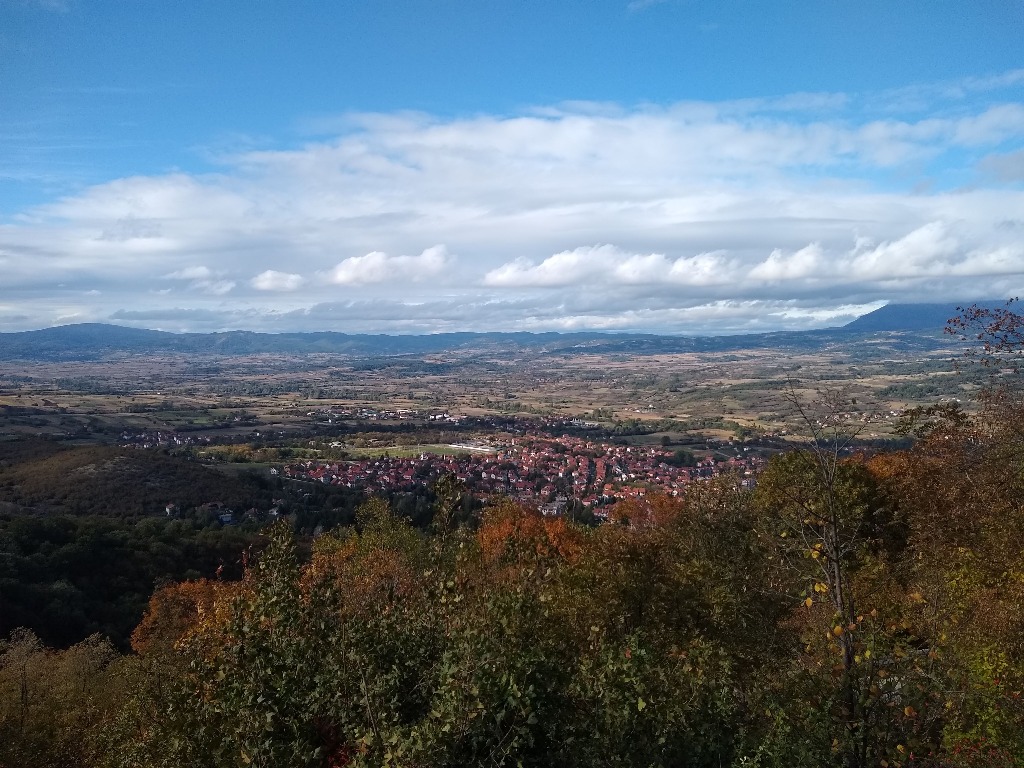
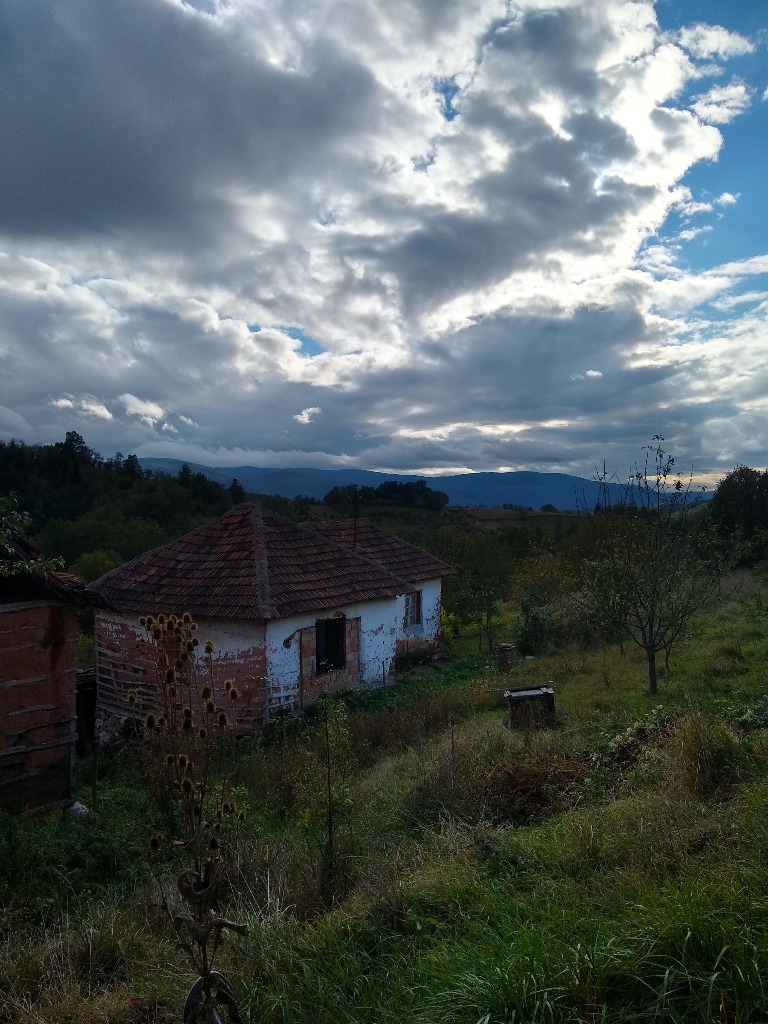
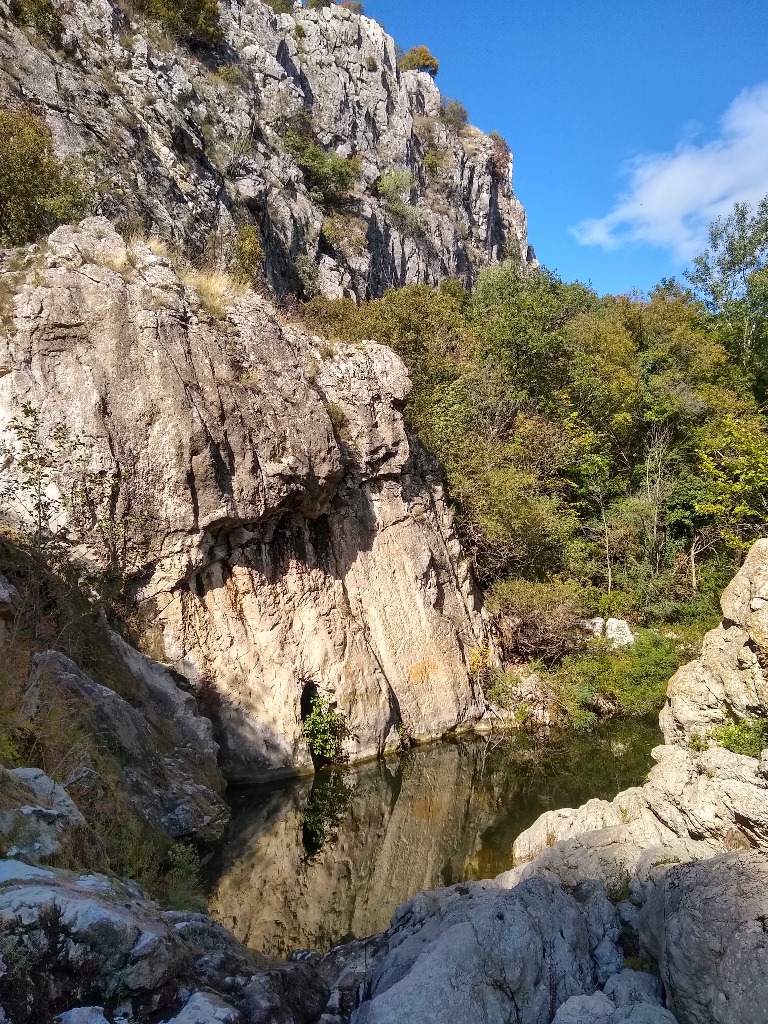
A dry waterfall I dragged my bike a kilometer to see
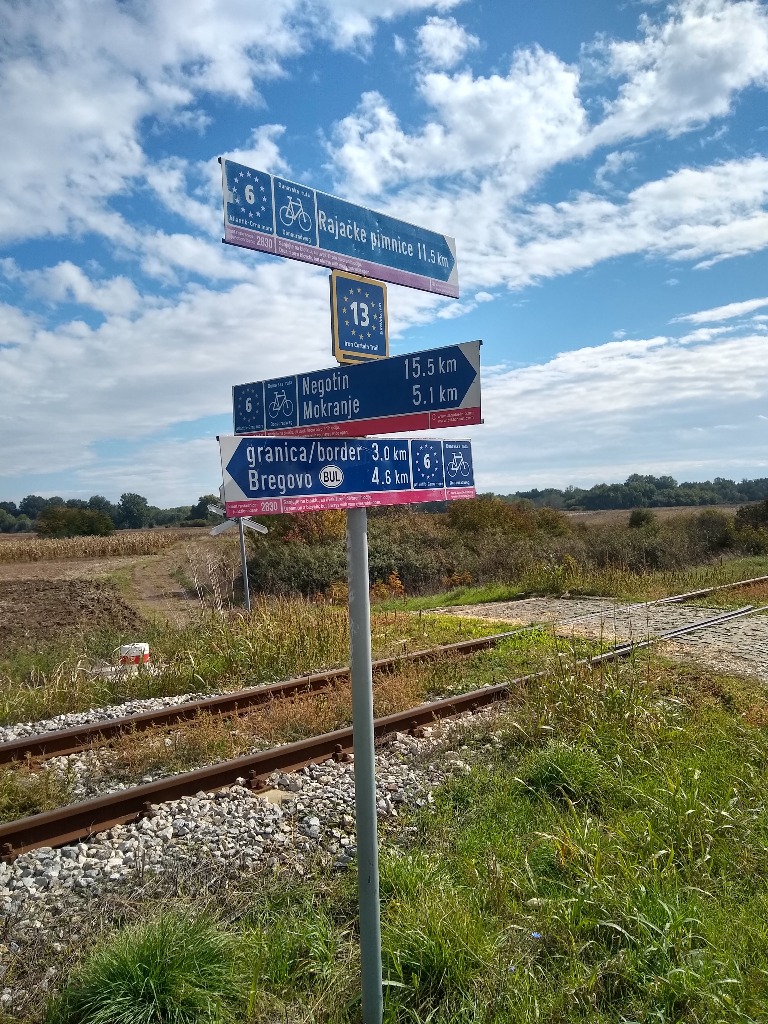
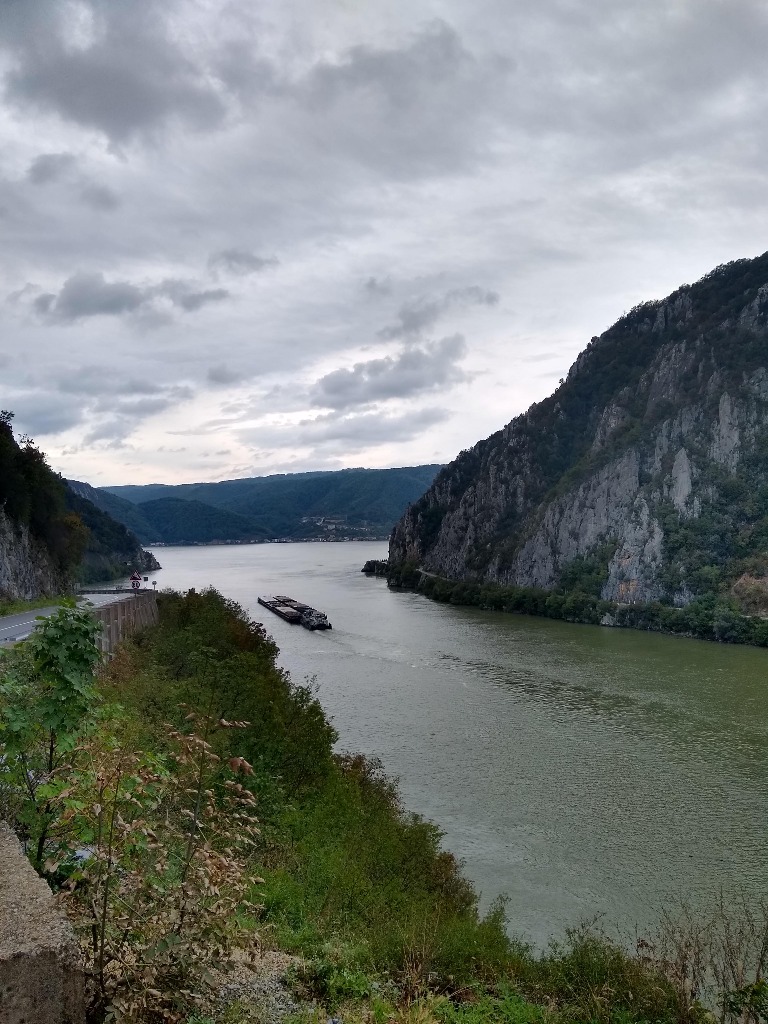
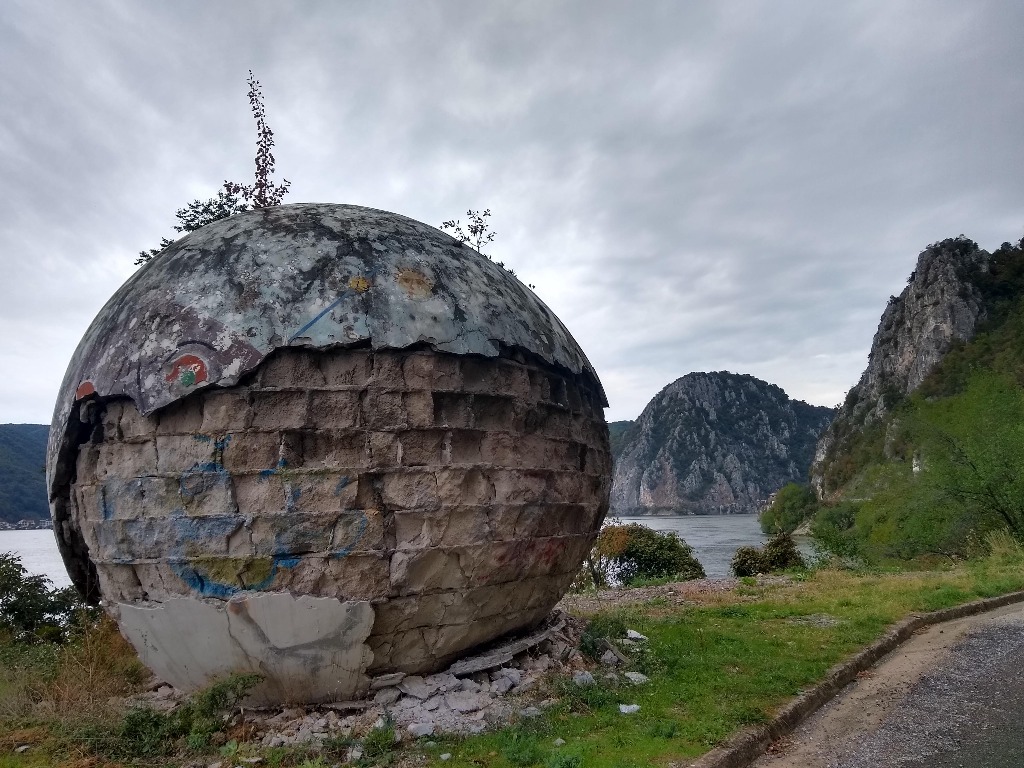
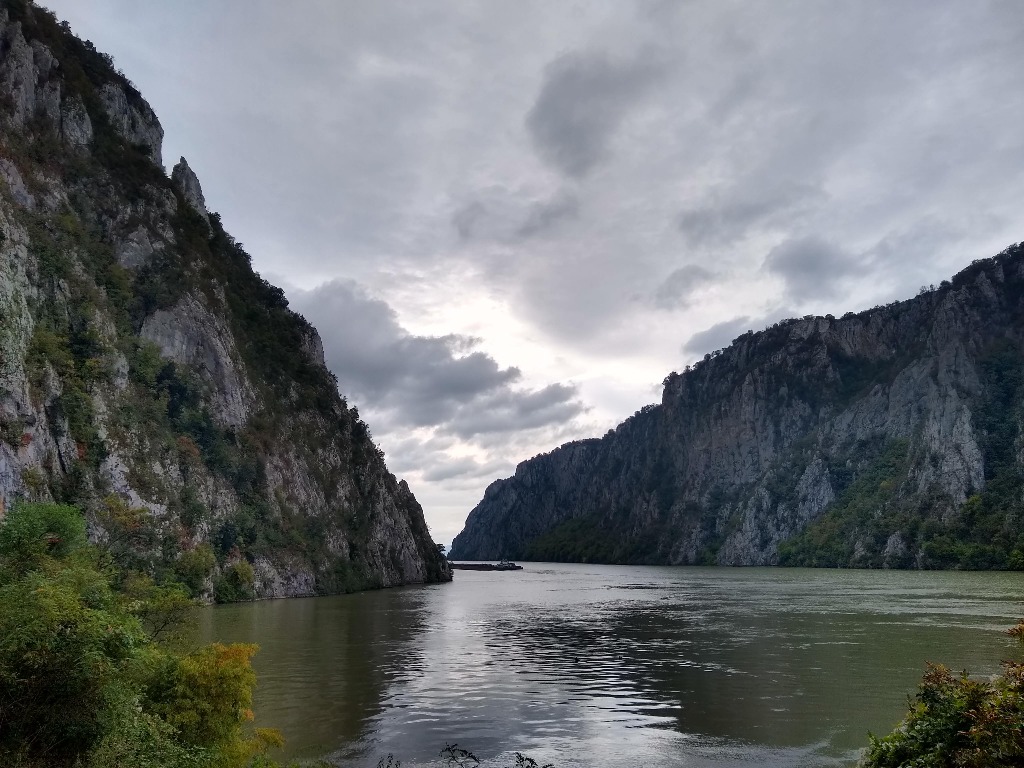
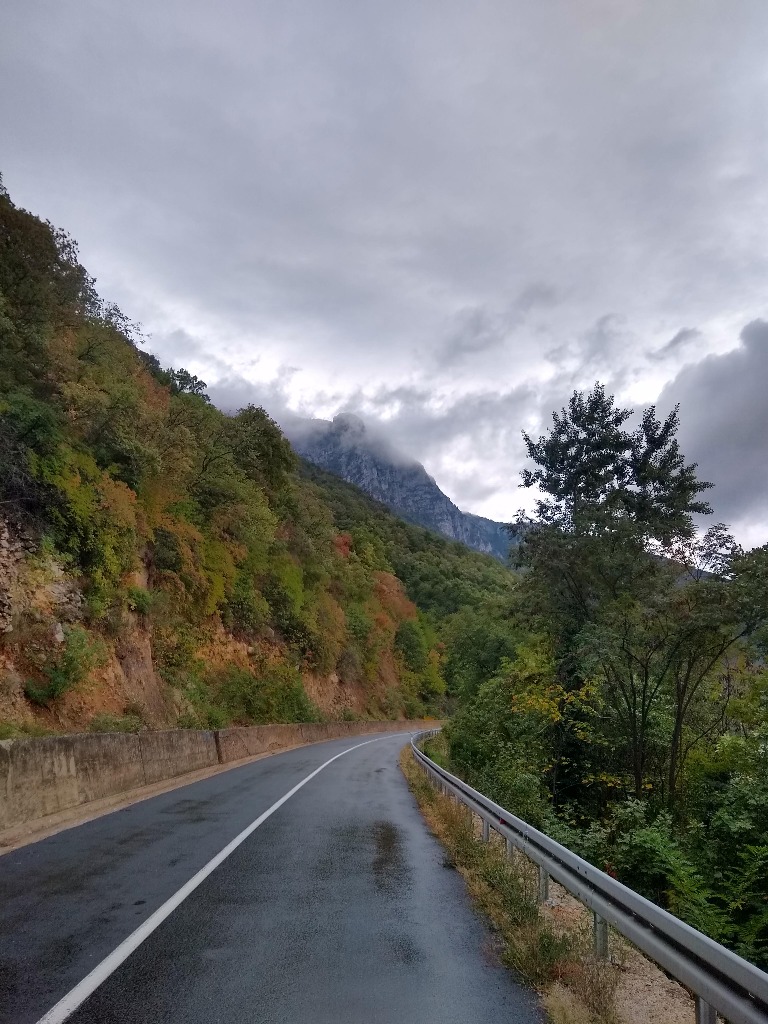
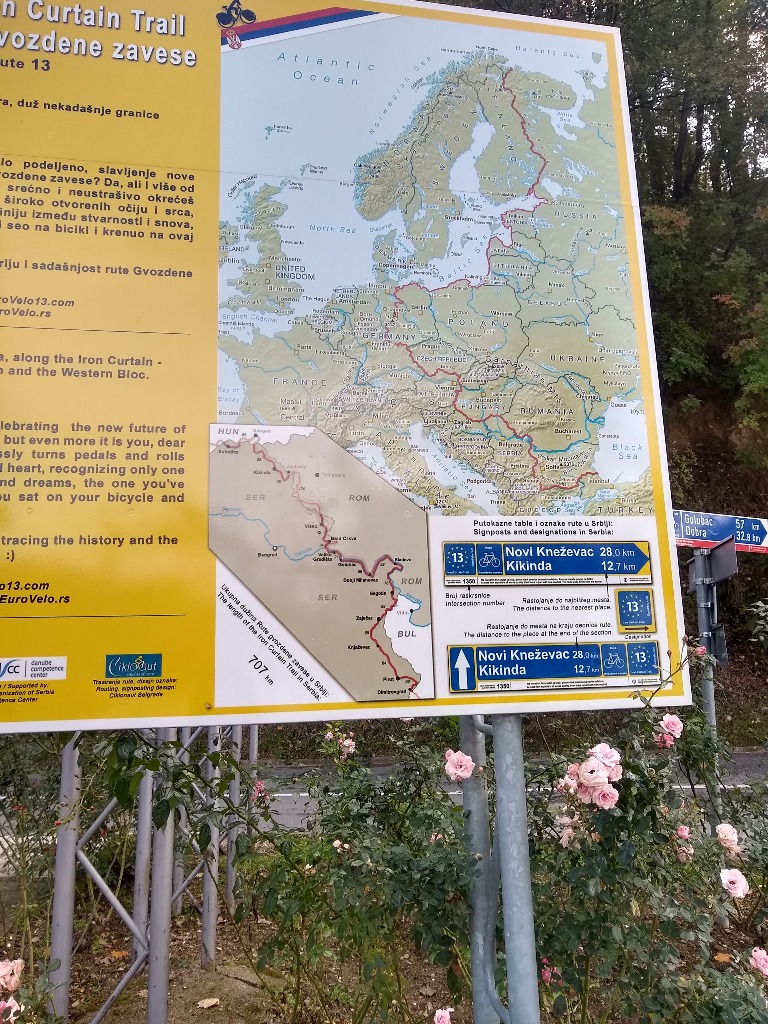
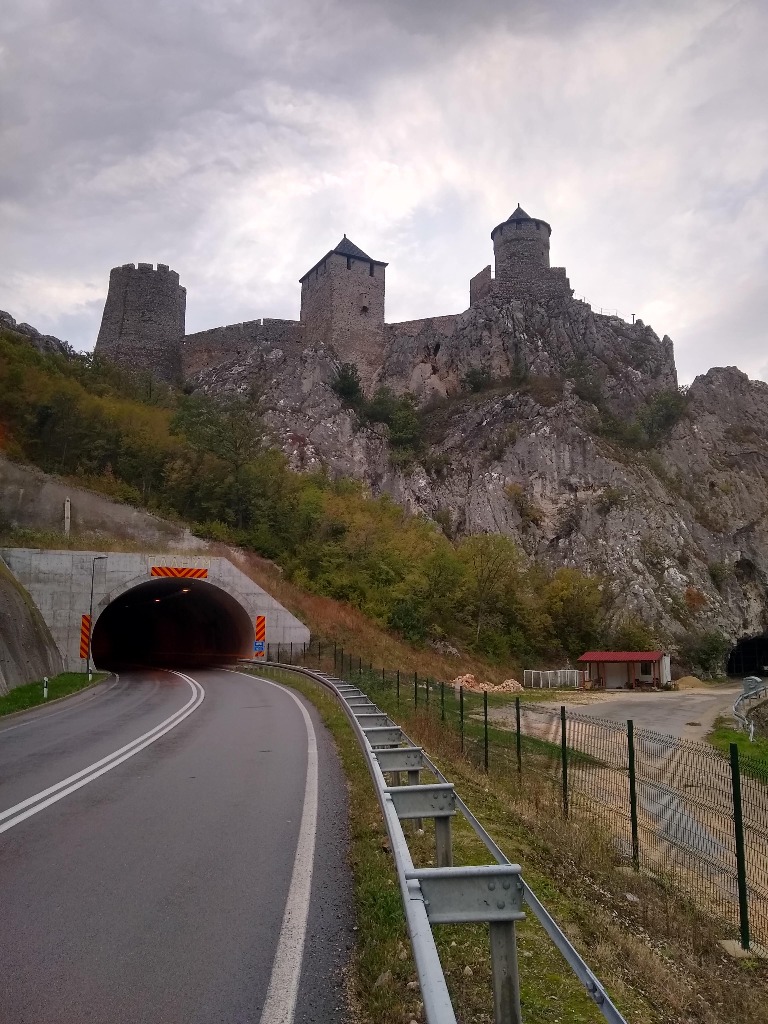
Golubac Fortress
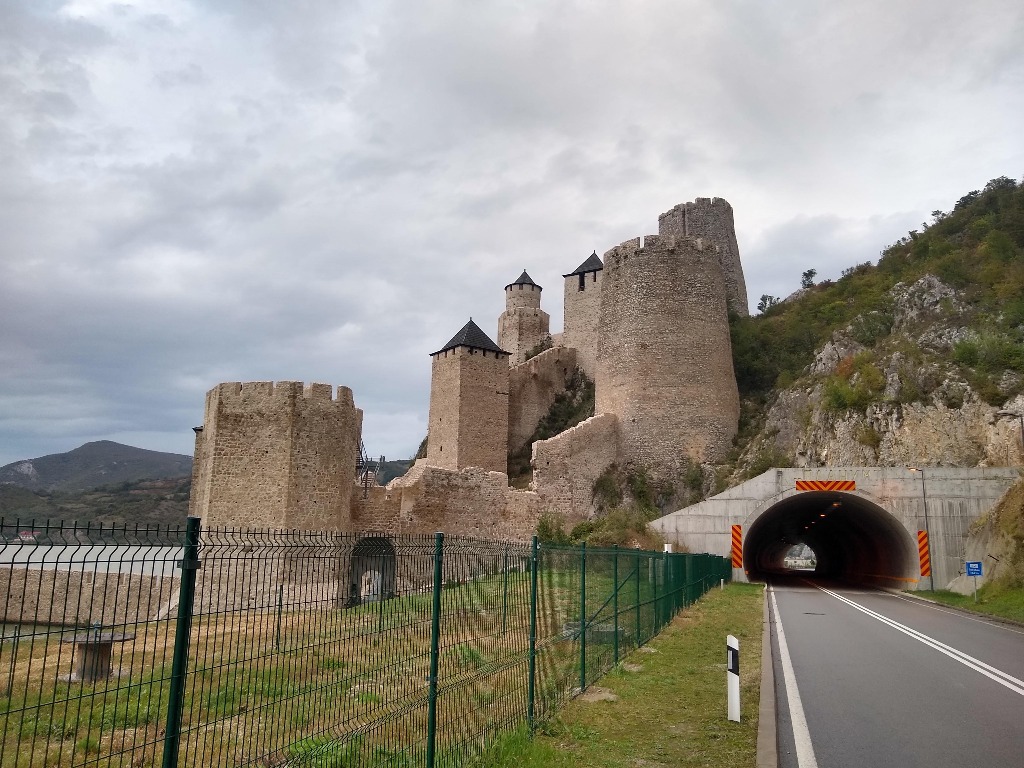
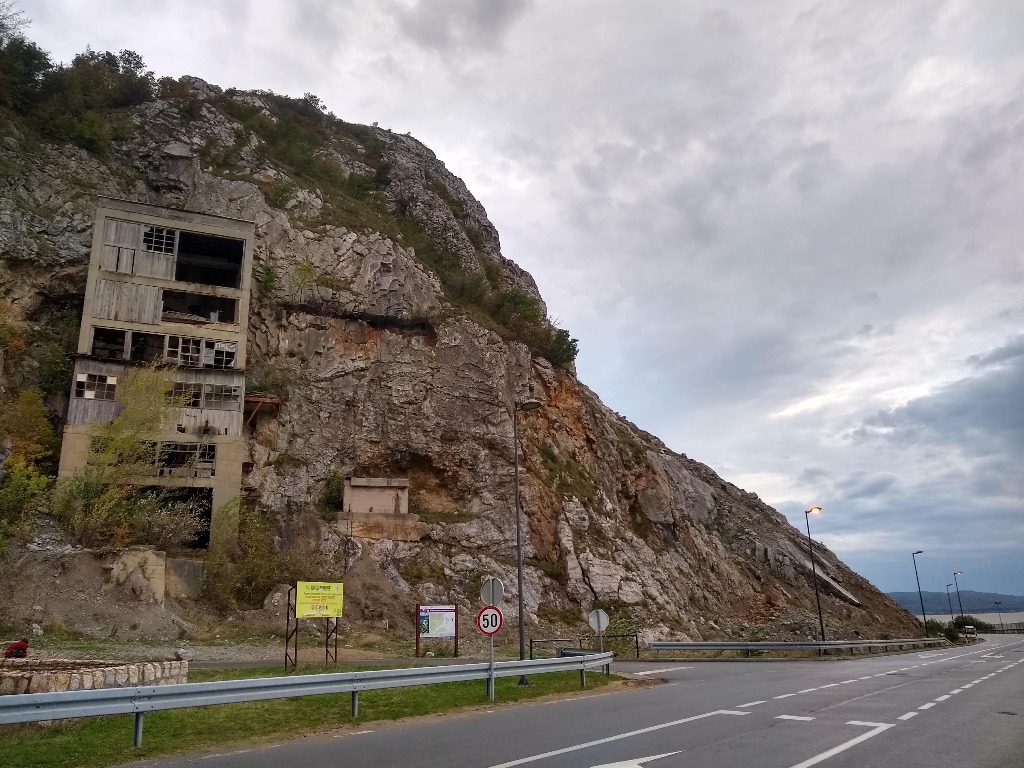
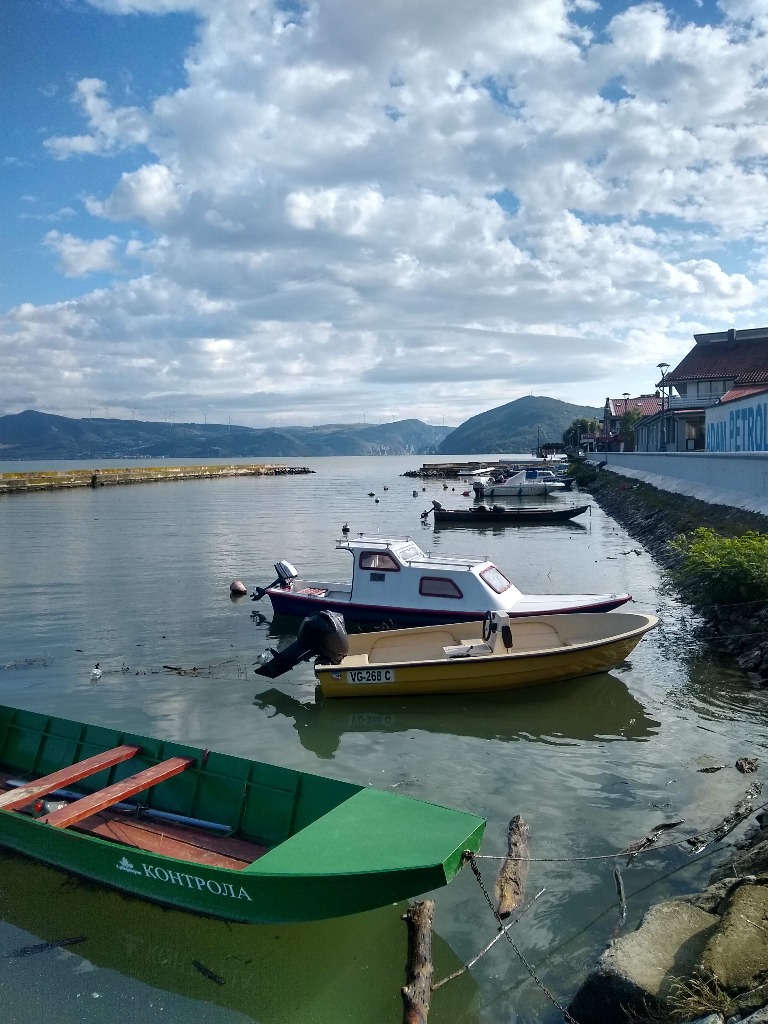
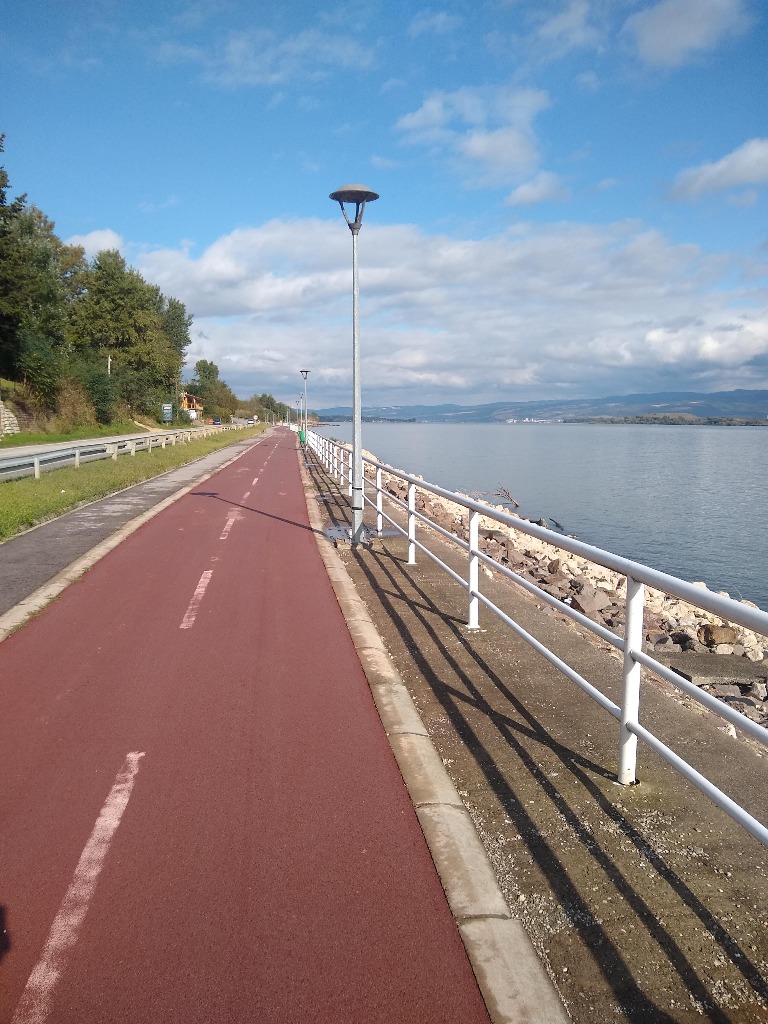
One of the few bike paths of the trip
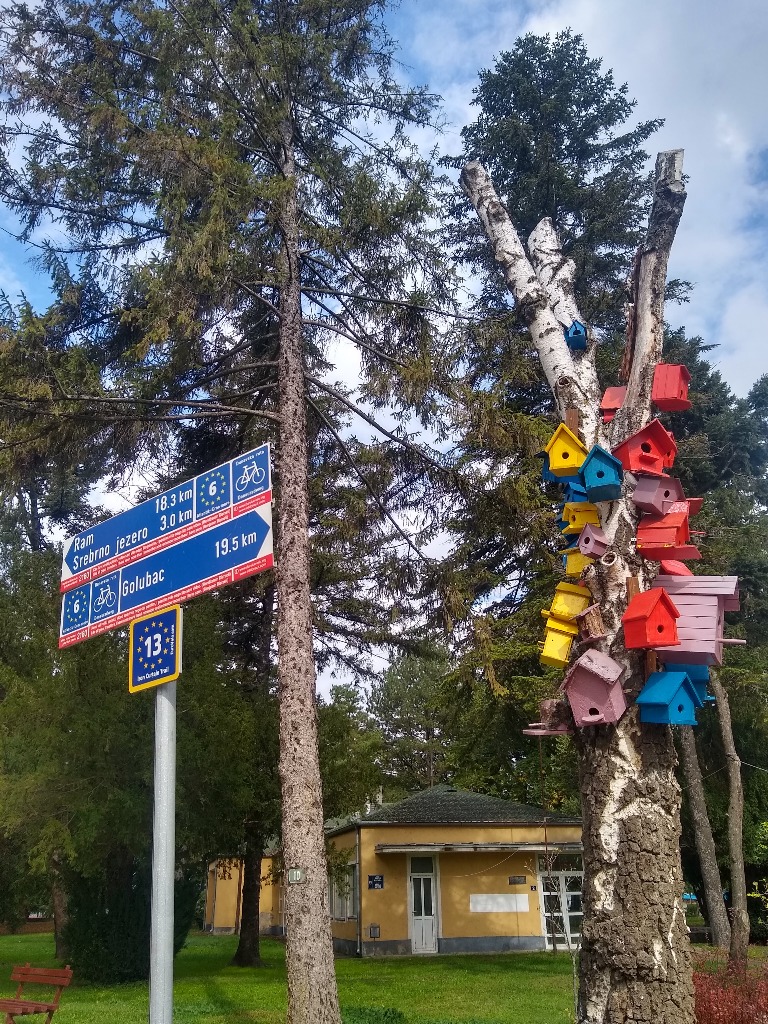
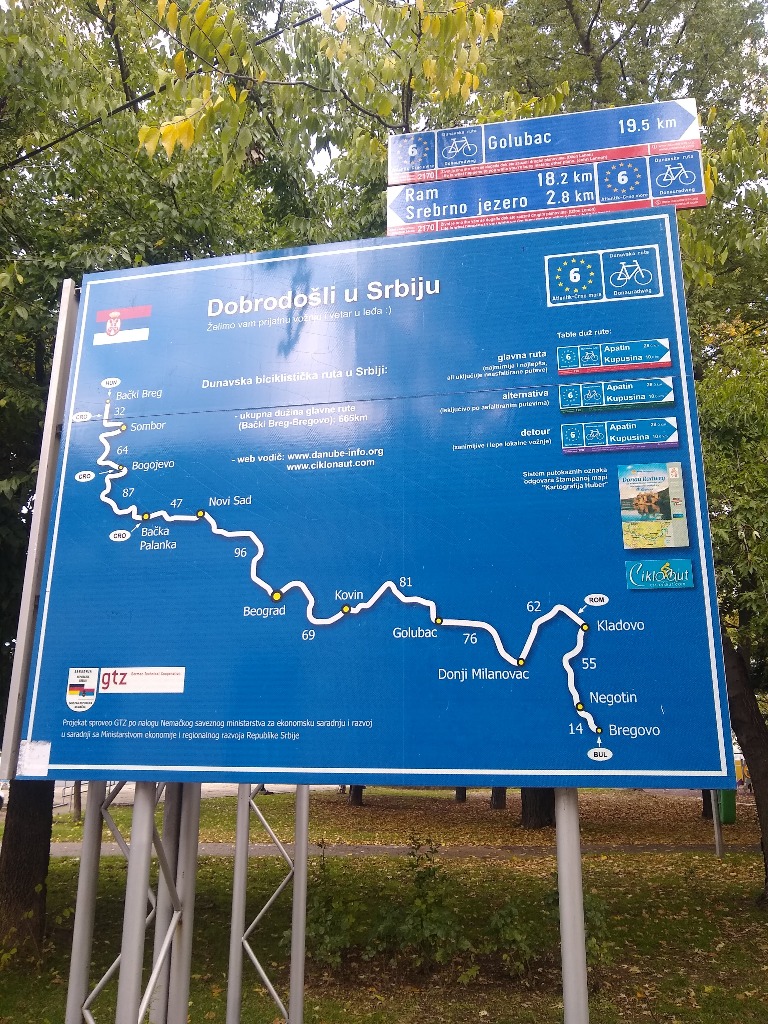
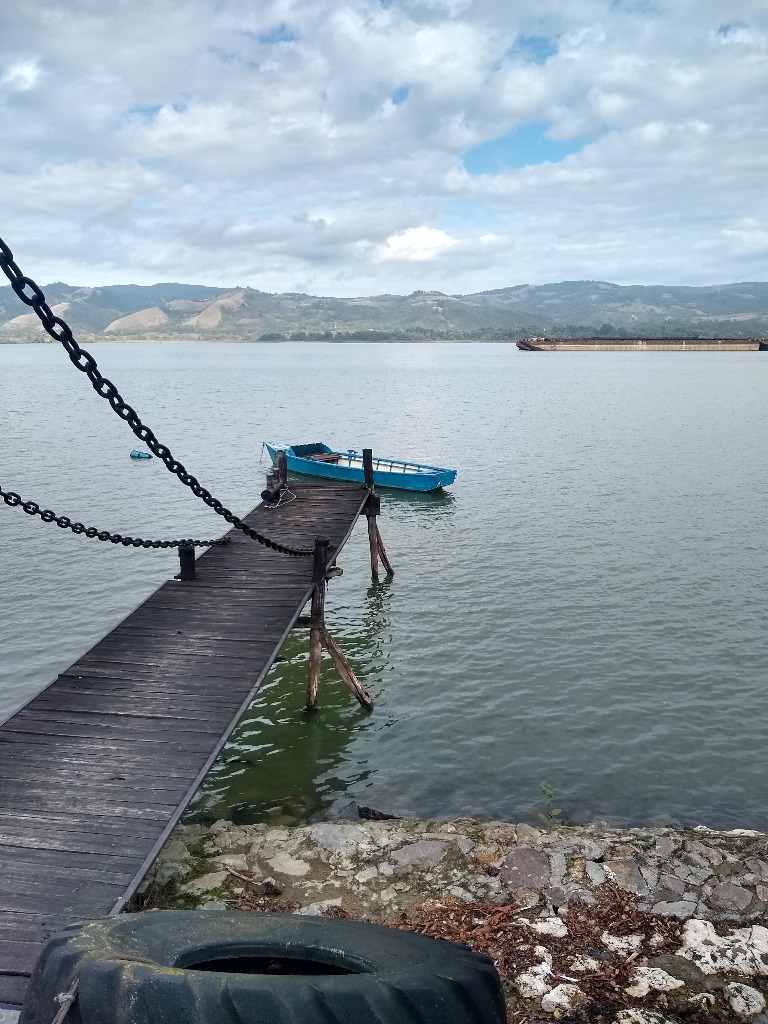
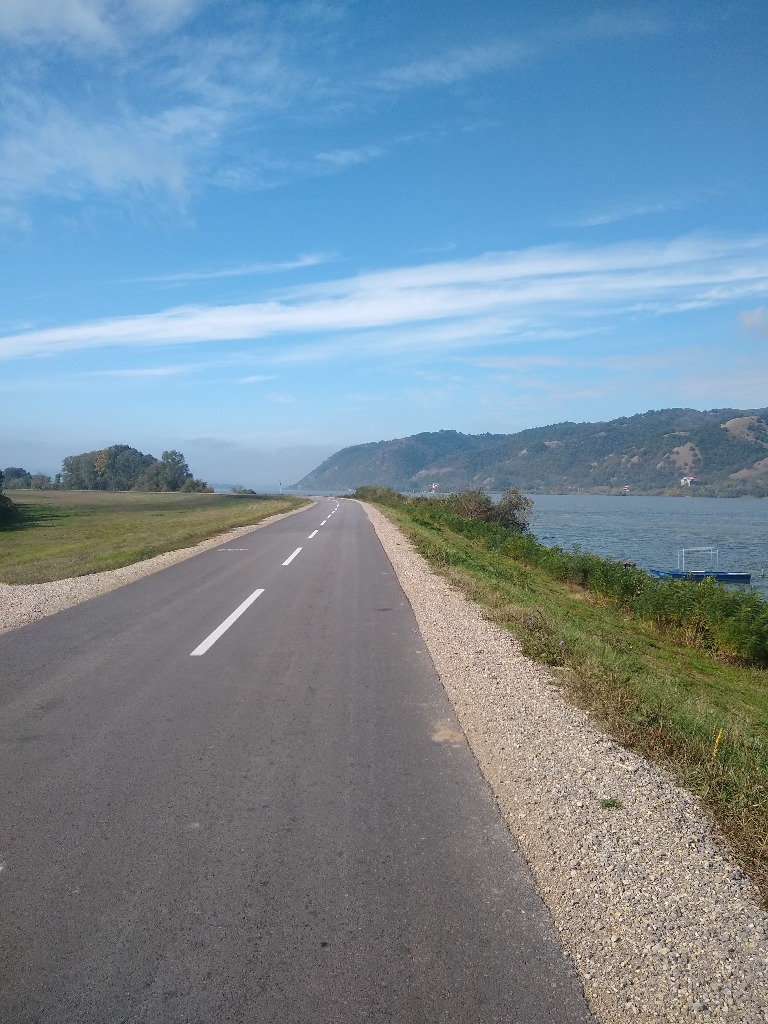
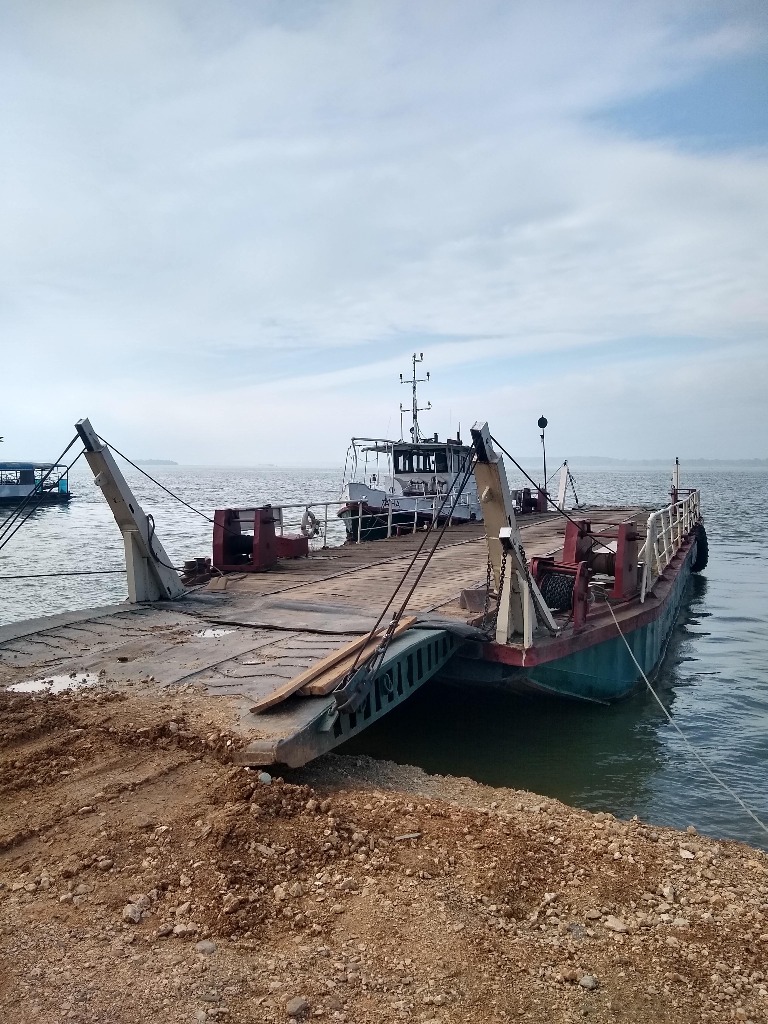
The ferry to Stara Palanka
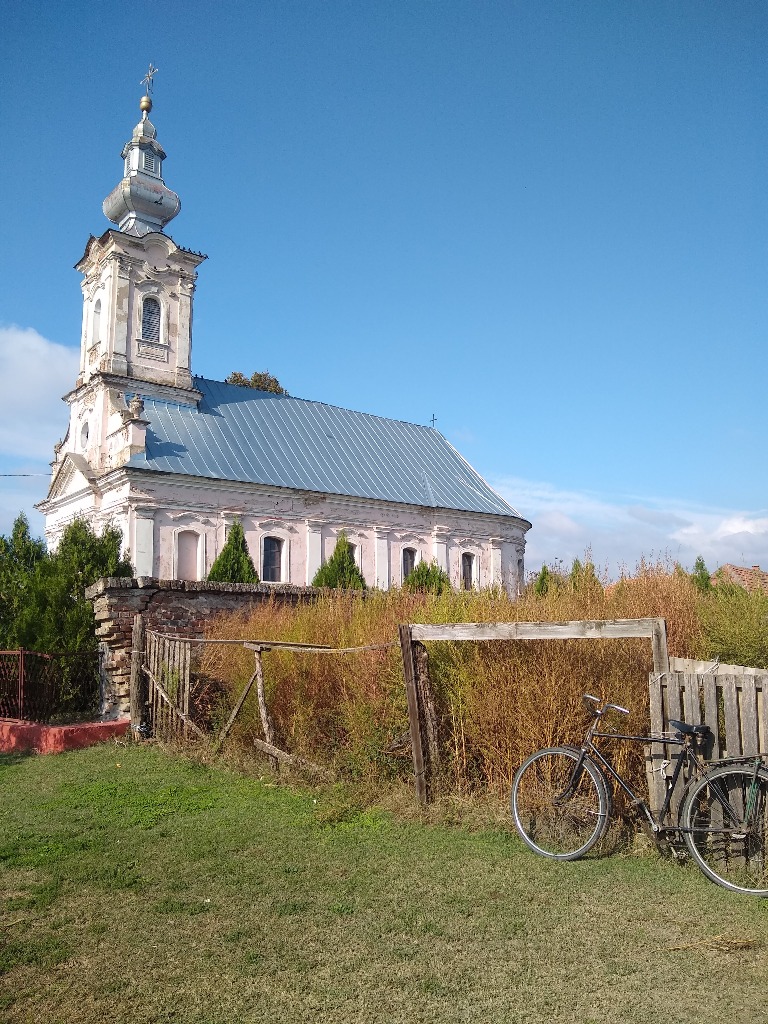
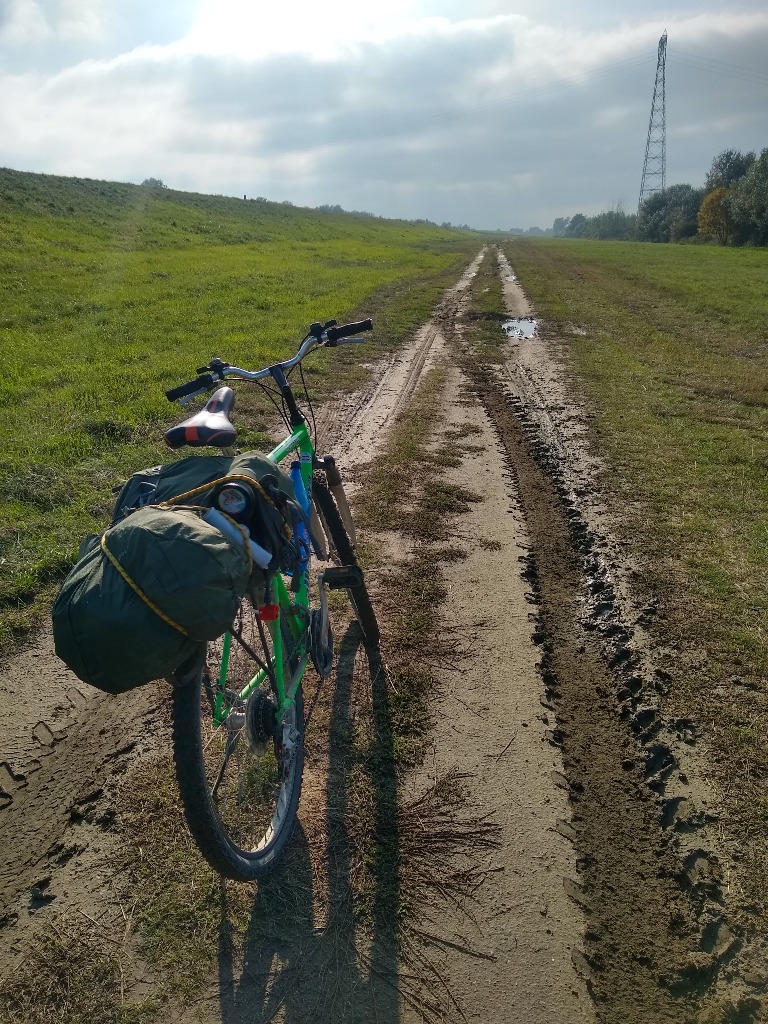
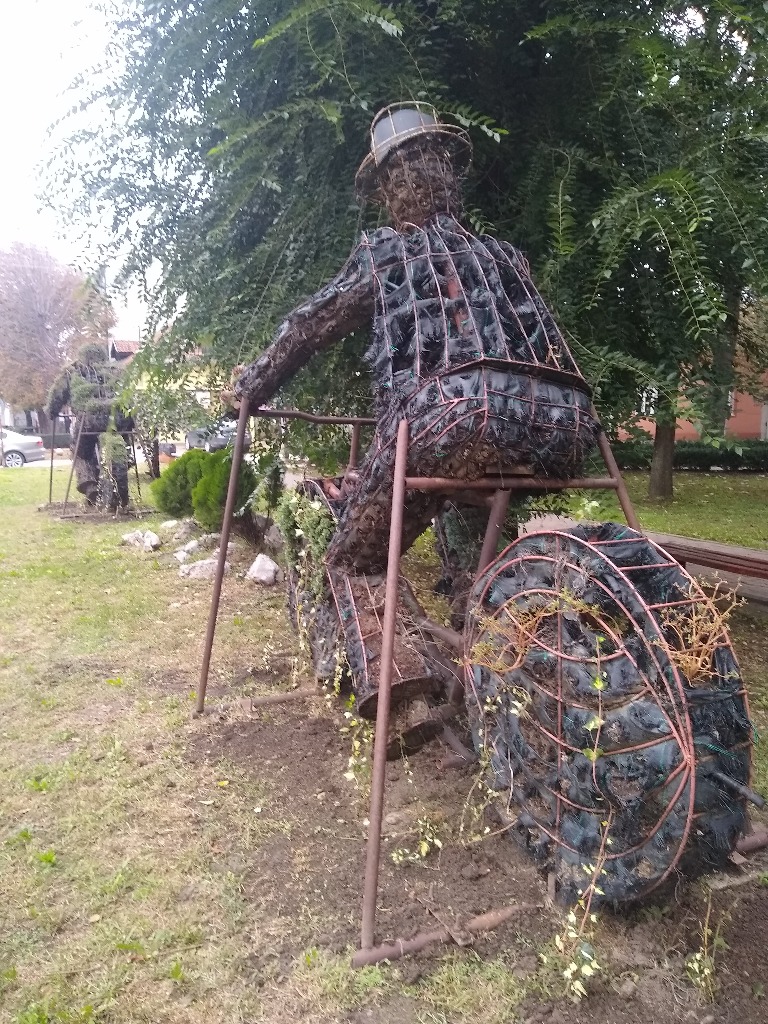
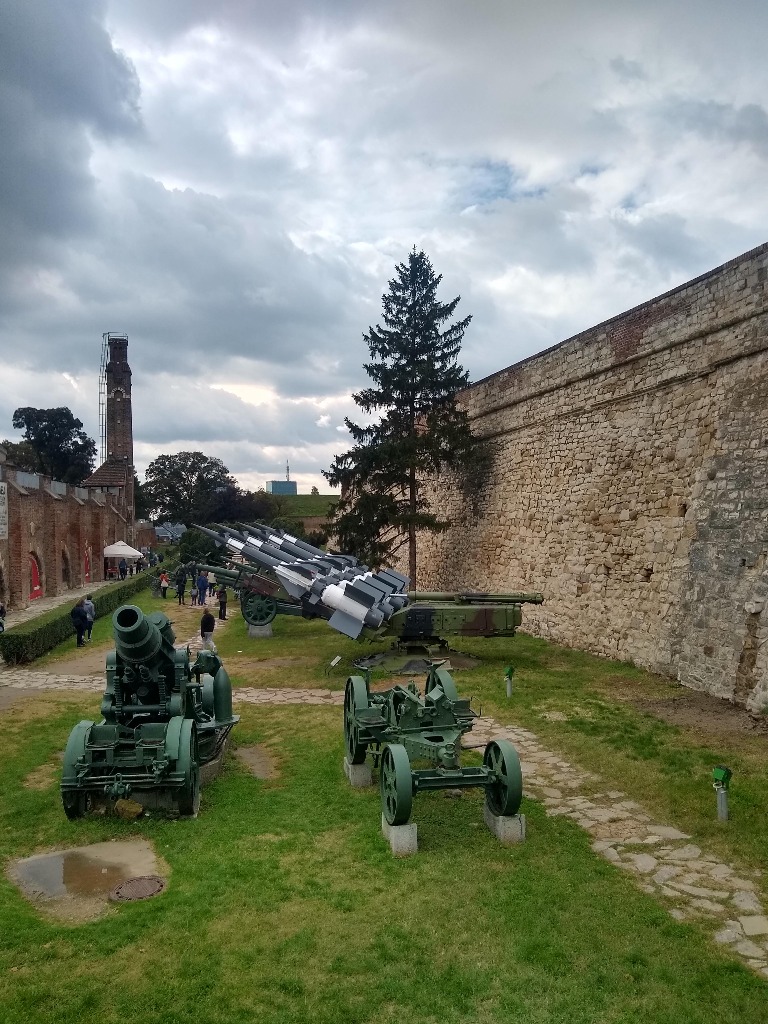
Typical medieval armaments guarding the inner wall of the Belgrade Fortress
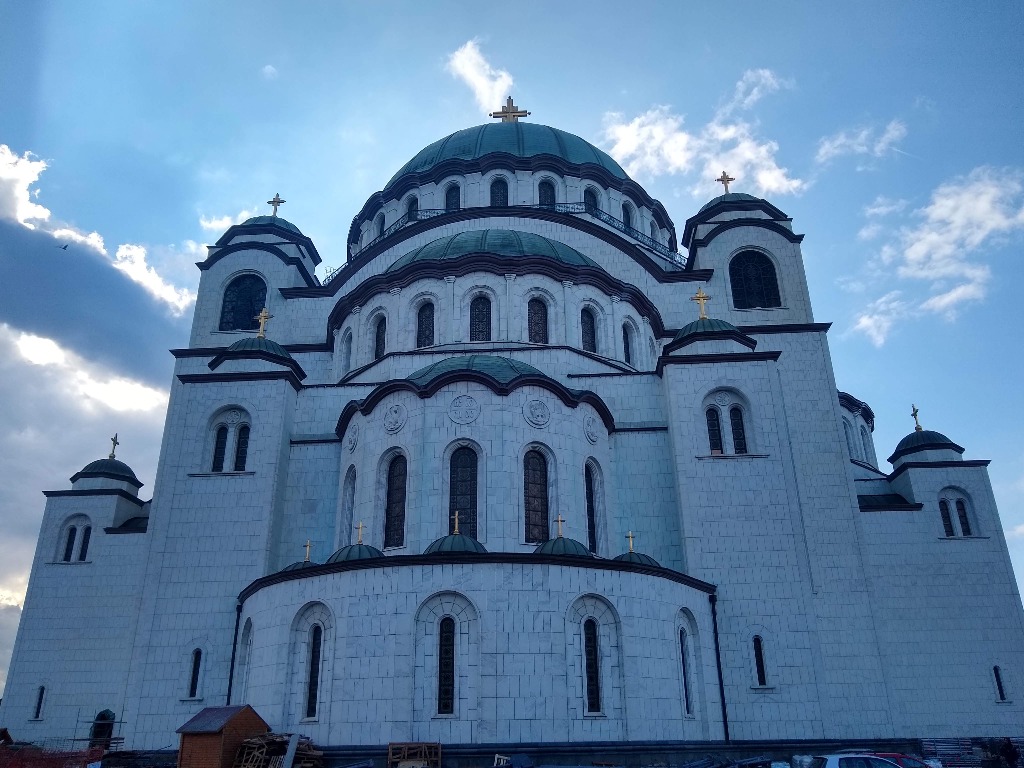
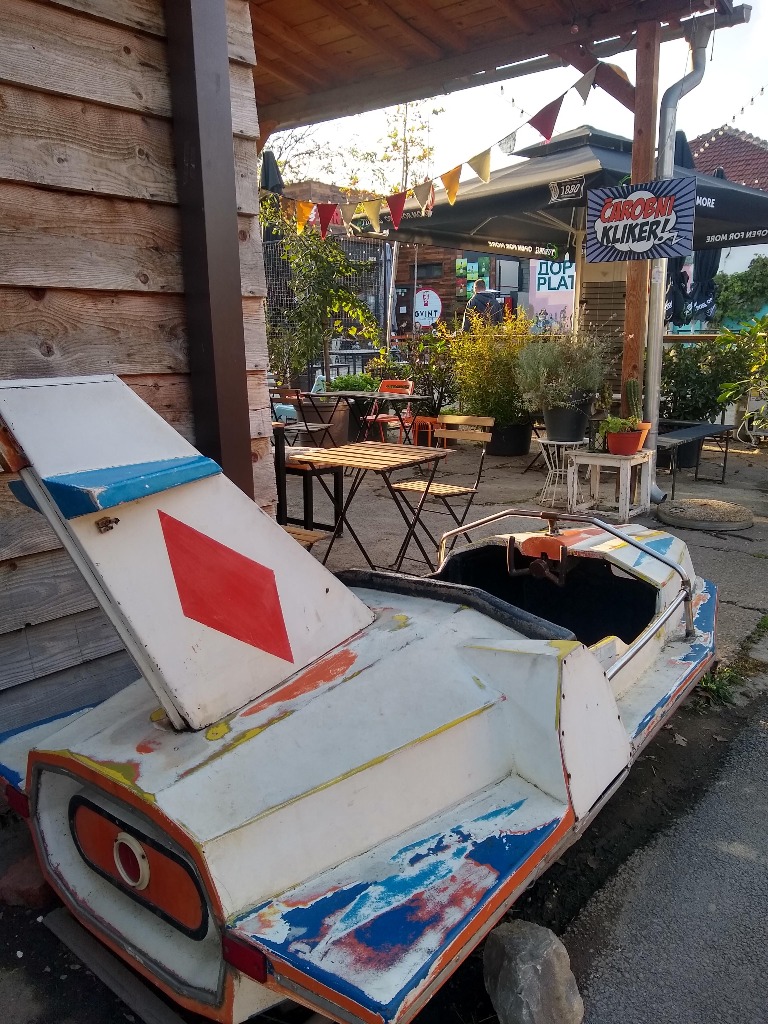
Brewery spaceship
